Forums
- Forums
- Axis And Allies Forum
- General Discussion
- Aviation News
Aviation News
Post a reply
- Go to Previous topic
- Go to Next topic
- Go to Welcome
- Go to Introduce Yourself
- Go to General Discussion
- Go to Screenshots, Images and Videos
- Go to Off topic
- Go to Works in Progress
- Go to Skinning Tips / Tutorials
- Go to Skin Requests
- Go to IJAAF Library
- Go to Luftwaffe Library
- Go to RAF Library
- Go to USAAF / USN Library
- Go to Misc Library
- Go to The Ops Room
- Go to Made in Germany
- Go to Campaigns and Missions
- Go to Works in Progress
- Go to Juri's Air-Raid Shelter
- Go to Campaigns and Missions
- Go to Works in Progress
- Go to Skinpacks
- Go to External Projects Discussion
- Go to Books & Resources
-
 Main AdminATLANTIC OCEAN (Aug. 9, 2016) An F/A-18C Hornet attached to the "Bulls" of Strike Fighter Squadron (VFA) 37 performs a touch-and-go on the flight deck of the aircraft carrier USS George H.W. Bush (CVN 77). GHWB recently started a training and qualification cycle in preparation for a 2017 deployment. (U.S. Navy photo by Mass Communication Specialist 3rd Class Christopher Gaines/Released)
Main AdminATLANTIC OCEAN (Aug. 9, 2016) An F/A-18C Hornet attached to the "Bulls" of Strike Fighter Squadron (VFA) 37 performs a touch-and-go on the flight deck of the aircraft carrier USS George H.W. Bush (CVN 77). GHWB recently started a training and qualification cycle in preparation for a 2017 deployment. (U.S. Navy photo by Mass Communication Specialist 3rd Class Christopher Gaines/Released)
ATLANTIC OCEAN (Aug. 9, 2016) An F/A-18E attached to the "Golden Warriors" of Strike Fighter Squadron (VFA) 87 lands on the flight deck of the aircraft carrier USS George H.W. Bush (CVN 77) for the first time in more than 13 months. GHWB recently started a training and qualification cycle in preparation for a 2017 deployment. (U.S. Navy photo by Mass Communication Specialist 3rd Class Christopher Gaines/Released)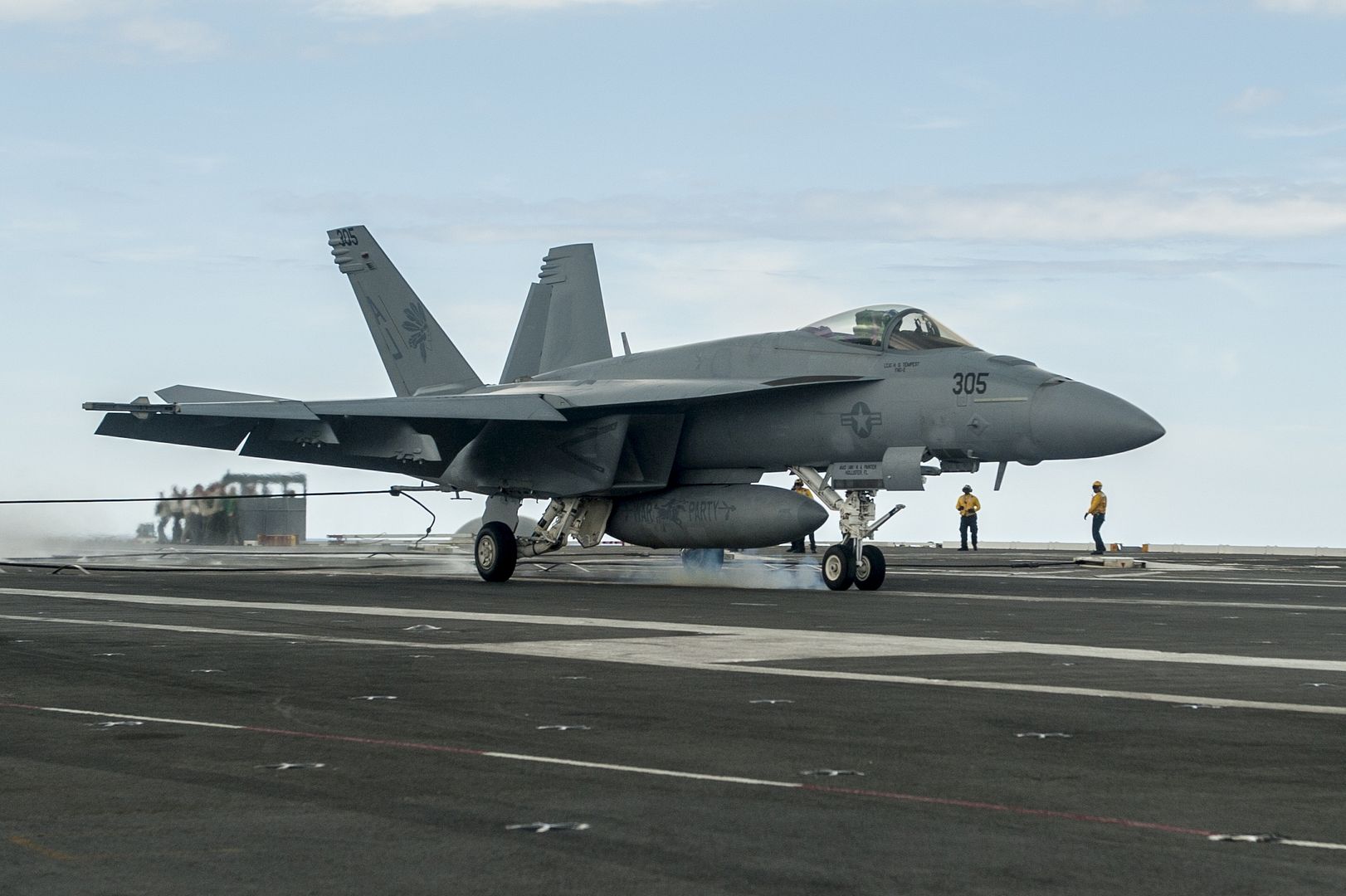
ATLANTIC OCEAN (Aug. 8, 2016) An F/A-18E Super Hornet attached to the "Golden Warriors" of Strike Fighter Squadron (VFA) 87 performs a fly-by over the flight deck of the aircraft carrier USS George H.W. Bush (CVN 77). The ship recently started a training and qualification cycle in preparation for a 2017 deployment. (U.S. Navy photo by Mass Communication Specialist 3rd Class Christopher Gaines/Released)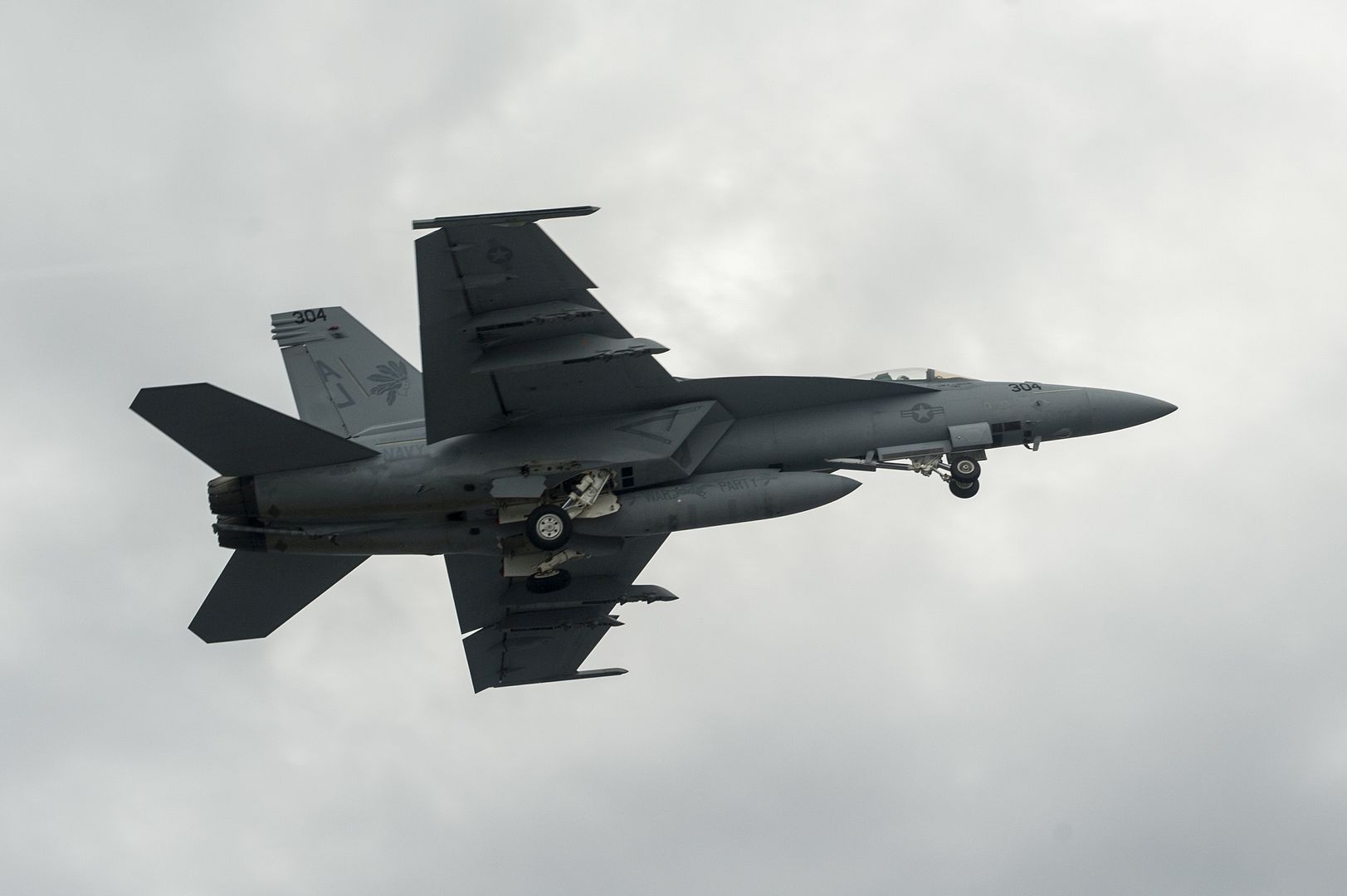
A B-52 Stratofortress, B-1 Lancer and B-2 Spirit sit beside one another on the flightline at Andersen Air Force Base, Guam, Aug.10, 2016. This marks the first time in history that all three of Air Force Global Strike Command's strategic bomber aircraft are simultaneously conducting operations in the U.S. Pacific Command area of operations. The B-1 Lancer, which arrived at Andersen Aug. 6, will replace the B-52 in support of the U.S. Pacific Command Continuous Bomber Presence mission. The CBP bomber swap between the B-1 and B-52 is occurring throughout the month of August as the B-1s return to support this mission for the first time since April 2006. In addition to the CBP bomber swap, three B-2s arrived in theater to conduct a Bomber Assurance and Deterrence deployment. The CBP mission and BAAD deployments are part of a long-standing history of maintaining a consistent bomber presence in the Indo-Asia-Pacific in order to maintain regional stability, and provide assurance to our allies and partners in the region. (U.S. Air Force photo by Tech. Sgt. Richard Ebensberger)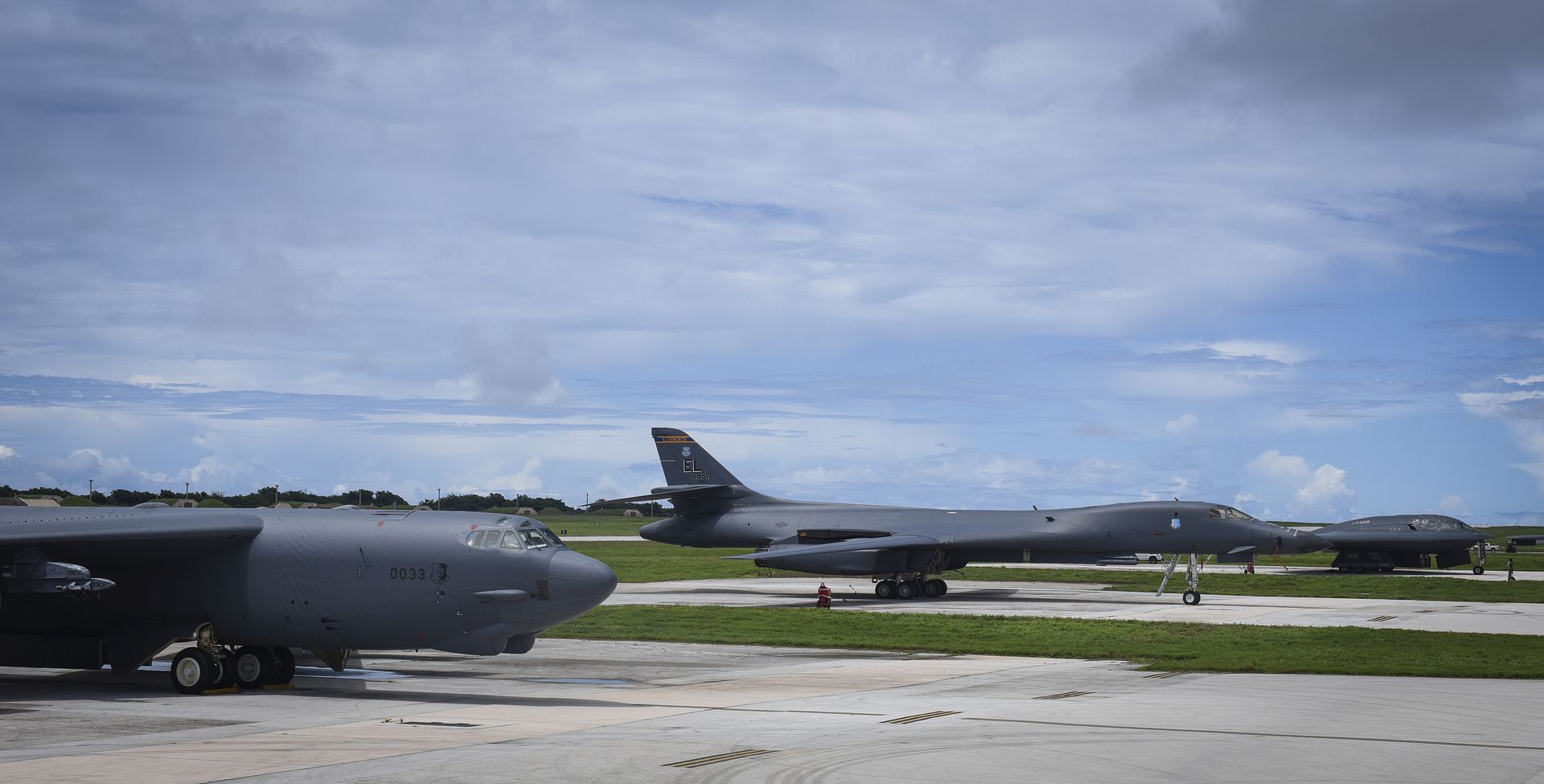
A U.S. Navy EA-18G Growler from Electronic Attack Squadron (VAQ) 141 with Carrier Air Wing (CVW) 5 out of Naval Air Facility Atsugi, Japan, conducts flight operations near Marine Corps Air Station Iwakuni, Japan, Aug. 11, 2016. The flight, observed by the Iwakuni City mayor as well as members of the press and public, provided observers some insight to the operational nature of the Growler. Carrier Air Wing 5 is expected to transition from its present home station, NAF Atsugi, to MCAS Iwakuni in the coming years. (U.S. Marine Corps photo by Cpl. Nathan Wicks)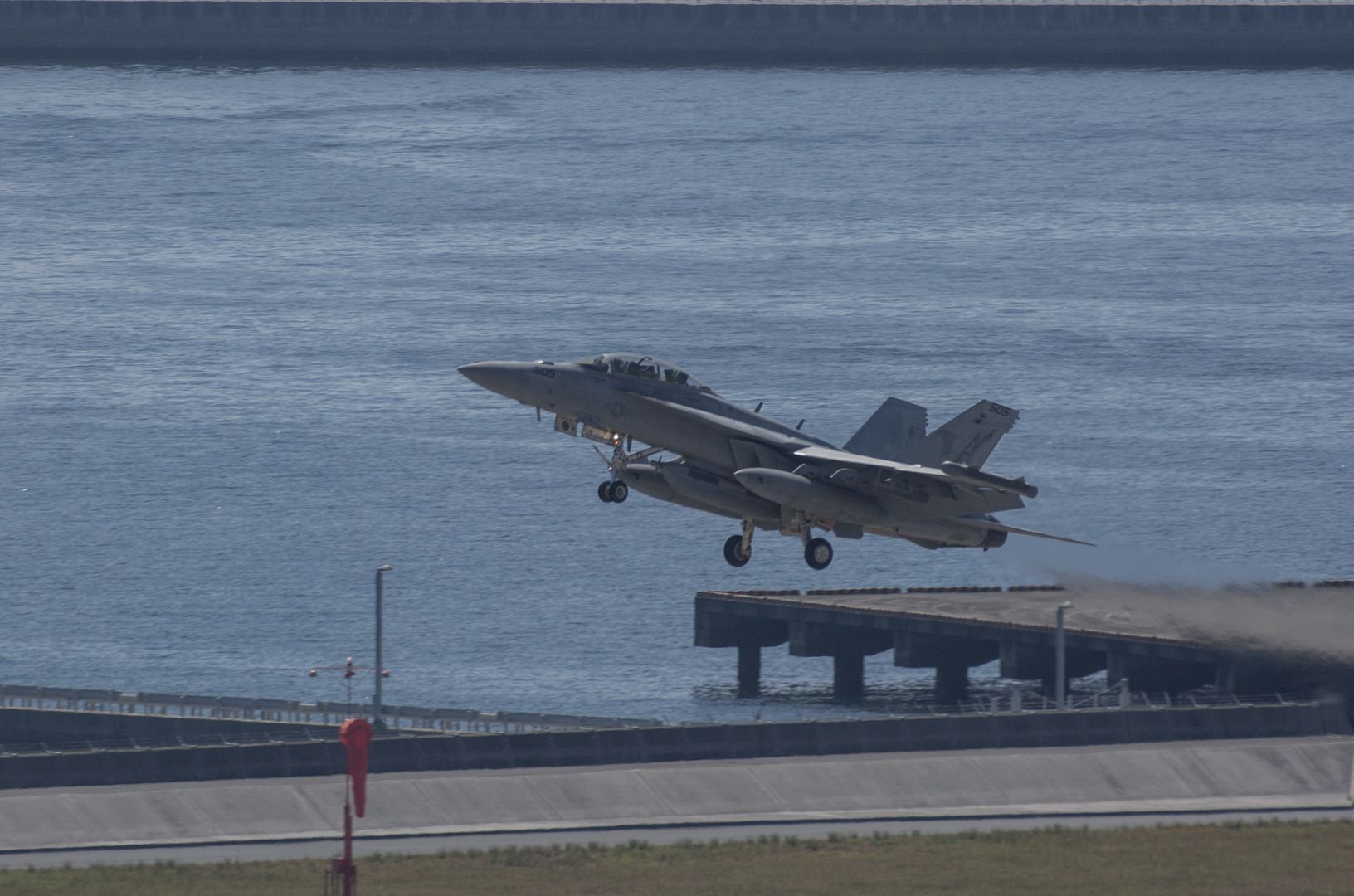
August 10, 2016 Montr?al Business Aircraft, Bombardier Inc., Press Release
The Challenger 650 aircraft is the market?s best value proposition for customers in Europe seeking higher baseline equipment level offered as standard, the widest cabin and seats, and the lowest direct operating costs*
Bombardier Business Aircraft announced today that it delivered its first Challenger 650 aircraft to be operated from Germany. This aircraft joins the Bombardier business jet fleet in Europe comprised of more than 430 aircraft in service.
?This first German customer delivery of a Bombardier Challenger 650 jet confirms the aircraft?s leadership in Western Europe," said Christophe Degoumois, Vice President, Sales, Europe, Russia and CIS, Bombardier Business Aircraft. ?The Challenger aircraft series, and the Challenger 650 jet in particular, are leaders in their category in Europe, with a market share of over 40 per cent. With the Synthetic Vision System (SVS) offered as baseline, its cabin almost six inches wider than the closest competitor, as well as the latest entertainment and productivity solutions, the Challenger 650 aircraft is the right choice for customers seeking uncompromised performance.?
The Bombardier Business Aircraft Market Forecast, published in May 2016, predicts business aviation industry deliveries of 1,530 aircraft in Europe for the 10-year period covering 2016-2025.
In service since 2015, the Challenger 650 jet builds on the legacy of the Bombardier Challenger aircraft series, which set the business aviation standard for reliability, efficiency and productivity for time-pressed executives and VIPs for over 30 years. Featuring a completely new and innovative cabin redesign, the Bombardier Vision flight deck technology and optimized engine thrust, the Challenger 650 aircraft delivers the industry?s best overall value, proven reliability and efficiency.
-
 Main AdminA U.S. Navy EA-18G Growler flies over a U.S. Air Force B-2 Spirit deployed from Whiteman Air Force Base, Mo., Aug. 10, 2016 at Andersen Air Force Base, Guam. Training and theater security cooperation engagements with U.S. allies and partners demonstrate a shared commitment to promoting security and stability. (U.S. Air Force photo by Senior Airman Jovan Banks)
Main AdminA U.S. Navy EA-18G Growler flies over a U.S. Air Force B-2 Spirit deployed from Whiteman Air Force Base, Mo., Aug. 10, 2016 at Andersen Air Force Base, Guam. Training and theater security cooperation engagements with U.S. allies and partners demonstrate a shared commitment to promoting security and stability. (U.S. Air Force photo by Senior Airman Jovan Banks)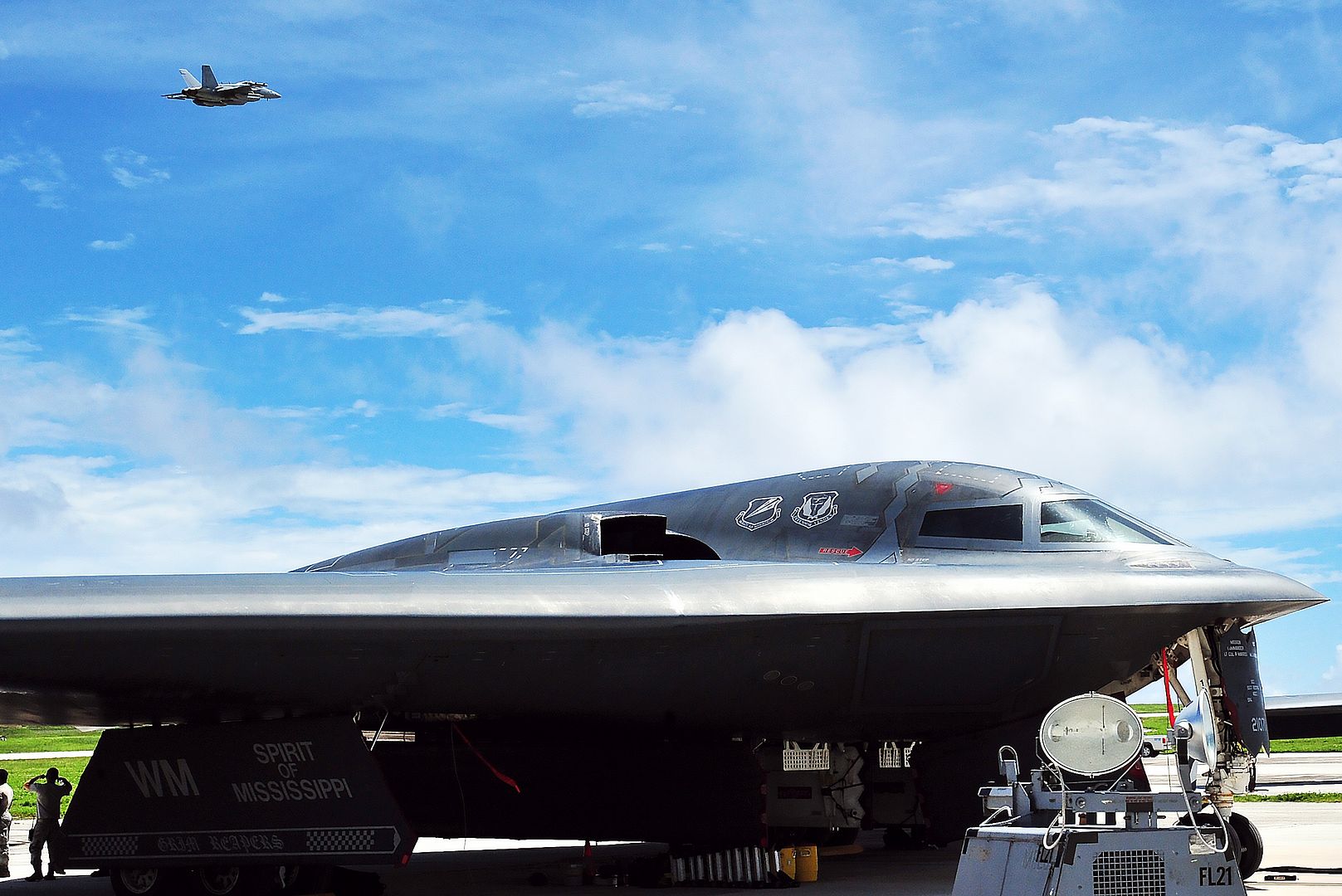
SAN DIEGO (Aug. 10, 2016) Aircraft carrier USS John C. Stennis (CVN 74) pulls into San Diego Bay after completing a seven month deployment. Photo was taken from aircraft carrier USS Theodore Roosevelt (CVN 71) which is currently moored and homeported in San Diego and is undergoing a scheduled Planned Maintenance Availability. (U.S. Navy photo by Mass Communication Specialist Seaman Austin R. Clayton/Released)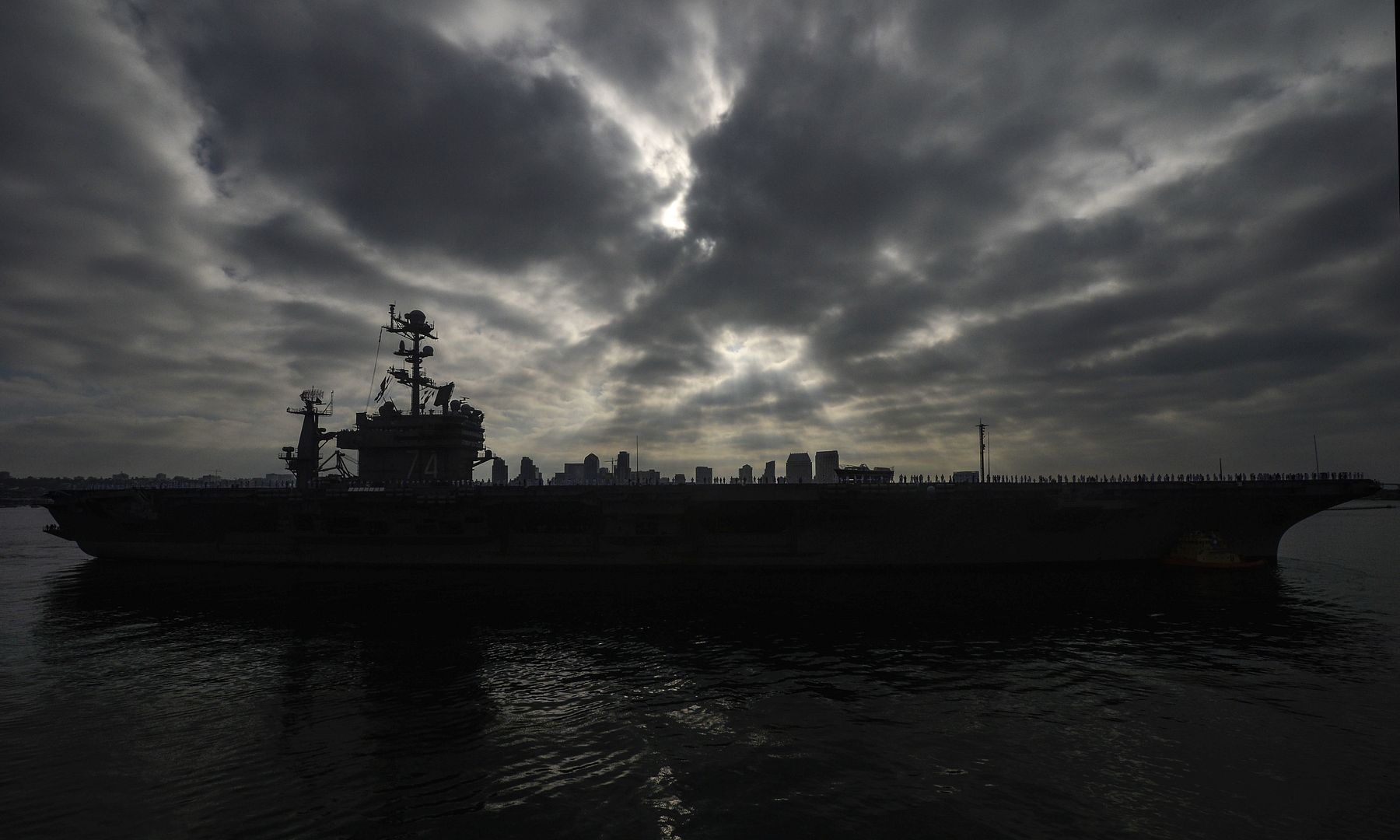
An Oregon Air National Guard F-15 Eagle assigned to the 173rd Fighter Wing is parked on the Hillsboro International Airport, Ore., flightline as part of the Oregon International Air Show, Aug. 5, 2016. The ?Screaming Eagle? paint designed is in recognition of the 75th Anniversary of the Oregon Air National Guard. (U.S. Air National Guard photo by Tech. Sgt. John Hughel, 142nd Fighter Wing Public Affairs/Released).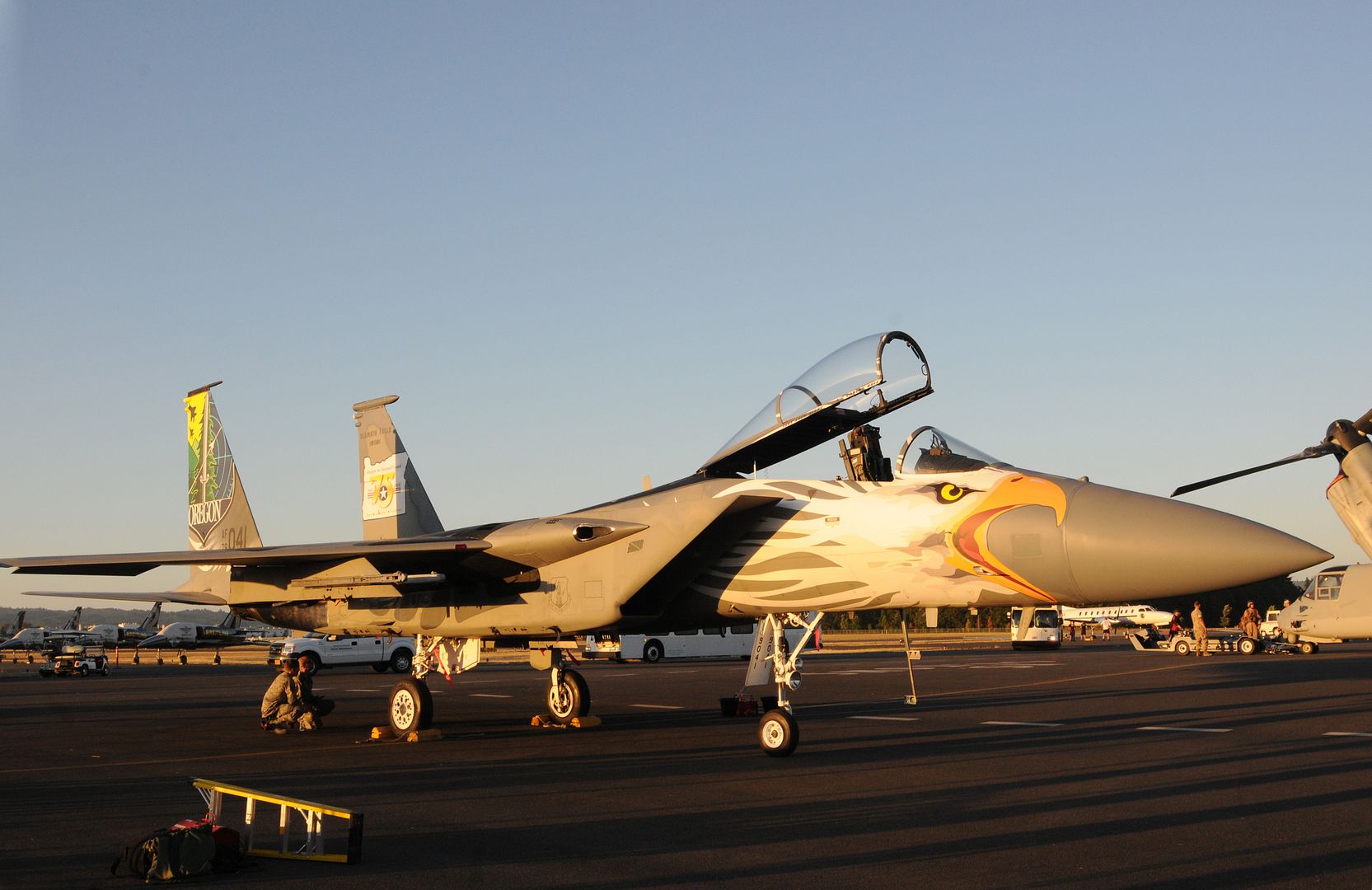
A No 77 Squadron F/A-18A Hornet takes off from RAAF Base Darwin during Exercise Pitch Black 2016. ? in Darwin, Northern Territory.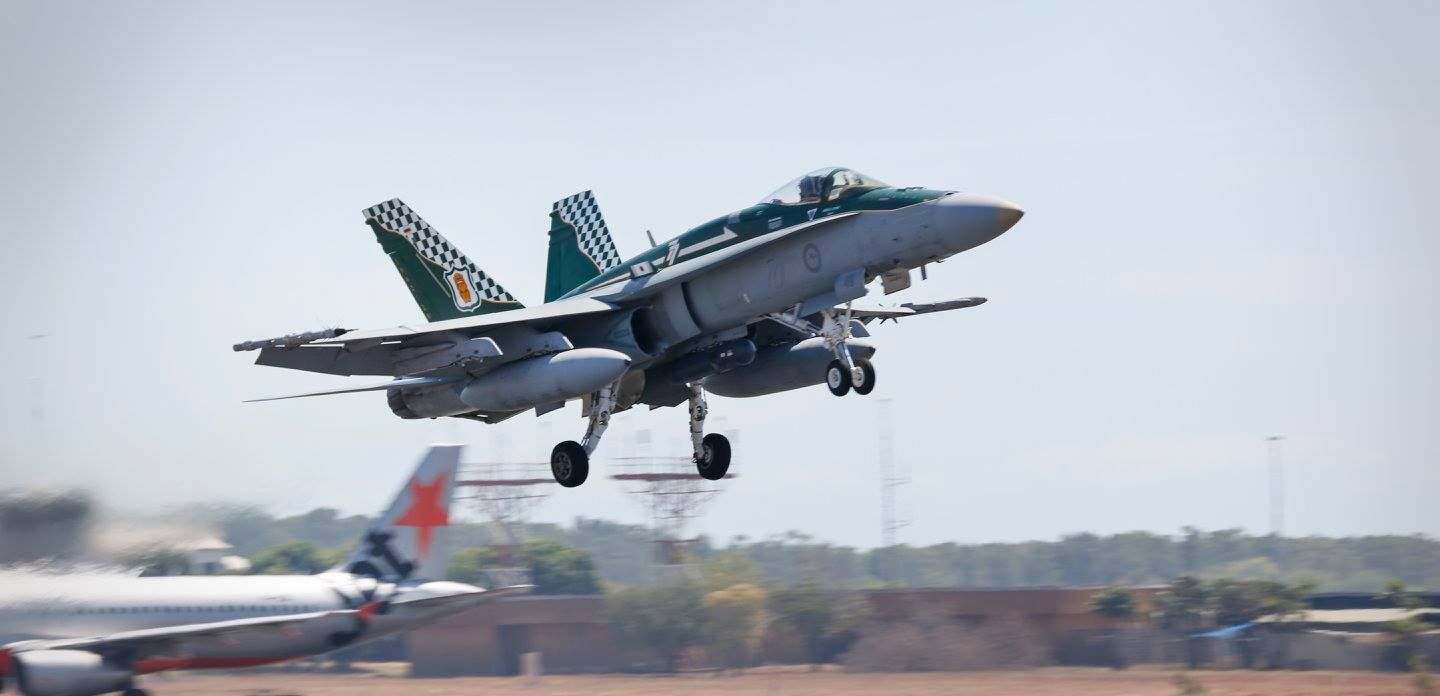
-
 Main AdminGULF OF ADEN (Aug. 13, 2016) A CH-53E Super Stallion Helicopter from Marine Medium Tiltrotor Squadron 264 (Reinforced), 22nd Marine Expeditionary Unit (MEU) takes off from the flight deck of the amphibious transport dock ship USS San Antonio (LPD-17) Aug. 13, 2016. 22nd MEU, deployed with the Wasp Amphibious Ready Group, is maintaining regional security in the U.S. 5th Fleet area of operations. (U.S. Marine Corps photo by Sgt. Ryan Young)
Main AdminGULF OF ADEN (Aug. 13, 2016) A CH-53E Super Stallion Helicopter from Marine Medium Tiltrotor Squadron 264 (Reinforced), 22nd Marine Expeditionary Unit (MEU) takes off from the flight deck of the amphibious transport dock ship USS San Antonio (LPD-17) Aug. 13, 2016. 22nd MEU, deployed with the Wasp Amphibious Ready Group, is maintaining regional security in the U.S. 5th Fleet area of operations. (U.S. Marine Corps photo by Sgt. Ryan Young)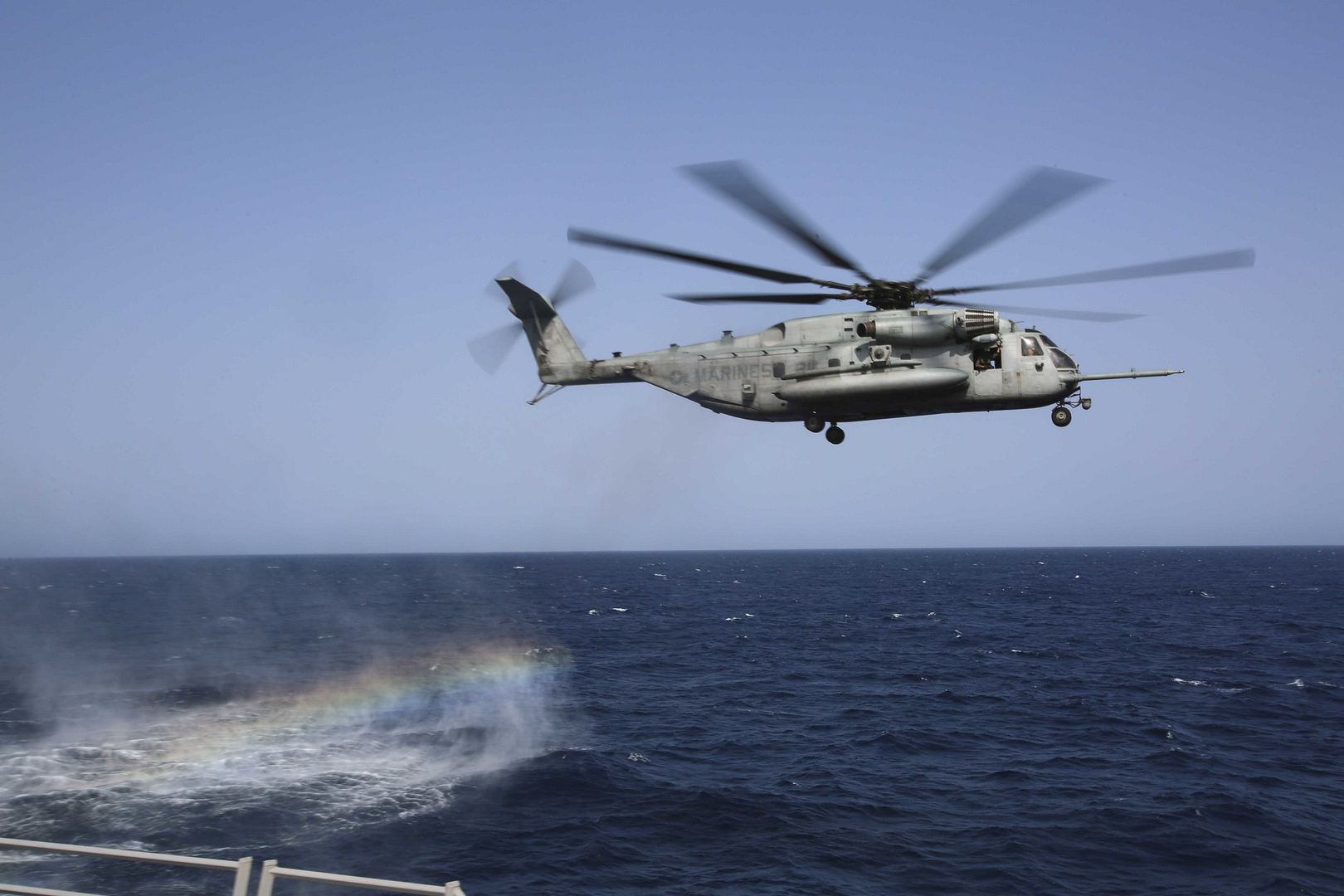
EDWARDS AIR FORCE BASE, Calif. --
Team Edwards accomplished another first recently by executing a clean separation of three Joint Attack Surface Standoff Missiles, or JASSMs, from the internal weapons bay of a B-52 Stratofortress here.
The aircraft has long been capable of carrying JASSMs on its wing pylons, but this is the first time they have been successfully released from Conventional Rotary Launcher in the internal bay.
?That was a first-ever for the B-52, and is also going to be another amazing enhancement in B-52 combat capability for Global Strike,? said Brig. Gen. Carl Schaefer, 412th Test Wing commander, who flew the F-16 photo chase plane for the JASSM mission. ?I got to chase the first-ever JASSM drop from the internal weapons bay of the B-52. We dropped it right here on the range at Edwards.?
The venerable bomber could carry up to 12 JASSMs on its wing pylons, said Jose Estrada, a weapons integration engineer with the 775th Test Squadron. Integration of CRL in internal weapons bay adds a capability of carrying eight more missiles in the aircraft, increasing the B-52?s JASSM payload by more than 60 percent.
The previous, or legacy, launcher used in the B-52 internal bay was the Common Strategic Rotary Launcher. This launcher was only capable of carrying unguided munitions, or ?dumb bombs.?
Another advantage to carrying weapons internally was that less drag is created on the aircraft which increases fuel efficiency, said Brian Pinto, also a weapons integration engineer with the 775th.
?For long range operations, this means less drag. The aircraft can fly further and faster and still return to base after the mission,? Estrada said.
Although the release of missiles was the milestone, the missiles weren?t the main focus of the testing, Estrada said.
?The CRL is really what we?re looking at. We?ve already validated the [Joint Directed Attack Munition], now we?re working the JASSM. The next step is the [Miniature Air Launch Decoy].?
Earl Johnson, the test project manager, said this separation test was part of the first of three phases, and primarily focused on data collection. ?We accomplished fit checks, making sure the weapons had clearance, within the weapons bay, while rotating on the CRL, demonstrated a clean separation of the weapon in flight, and made sure everything was done safely,? he said.
The next phase ? the interim phase ? will include more of the same testing, but with the addition of live weapons. And the third phase will validate the CLR system?s full capability.
The JASSM is a long-range, conventional, air-to-ground, precision standoff missile for the U.S. and allied forces. According to Lockheed Martin, the weapon?s producer, it is designed to destroy high-value, well-defended, fixed and relocatable targets, while JASSM?s significant standoff range keeps aircrews well out of danger from hostile air defense systems.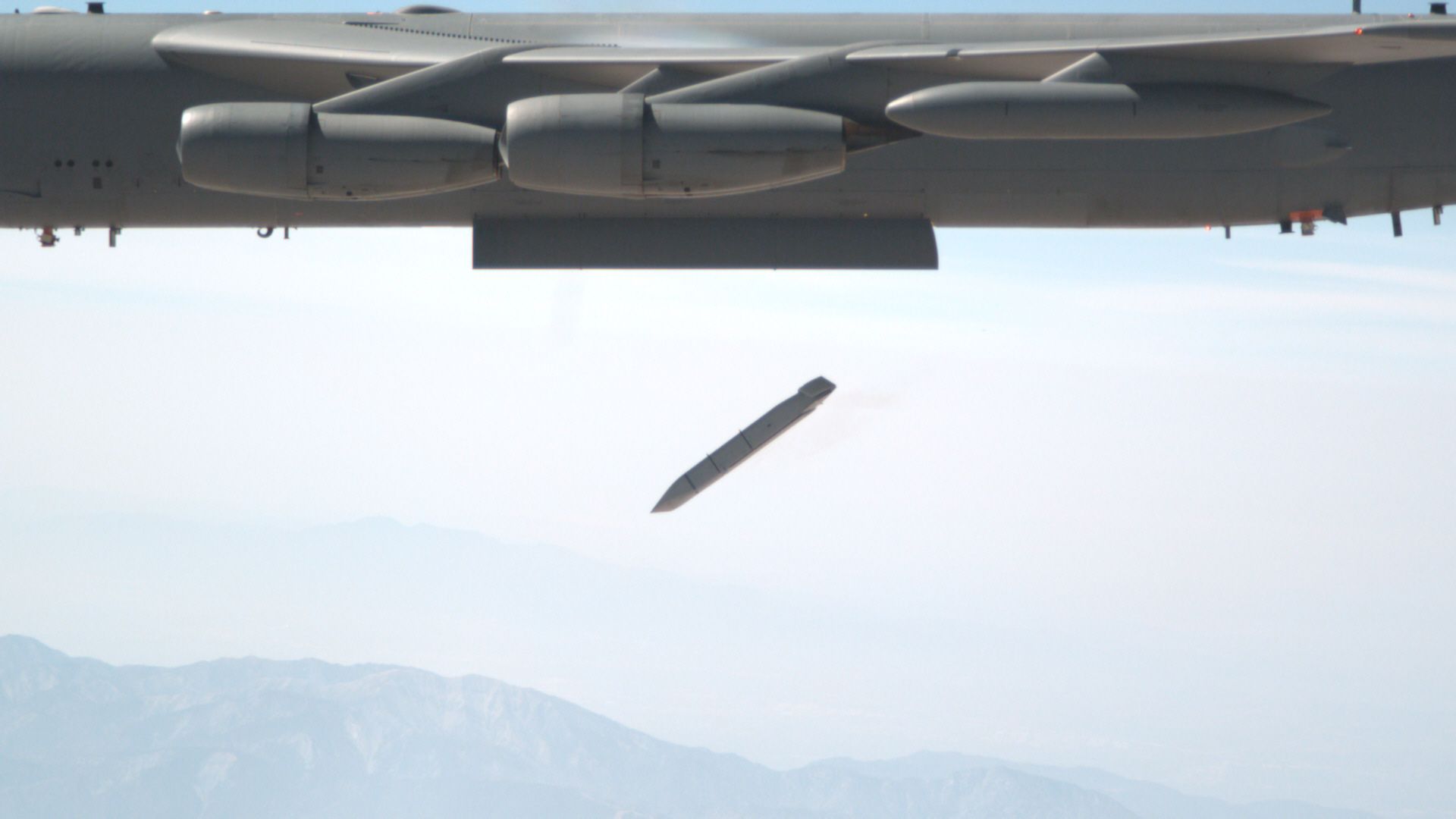
Patrouille de France in flight above Corsica August 13-2016.
Photo's courtesy of J. Mortreuil / air force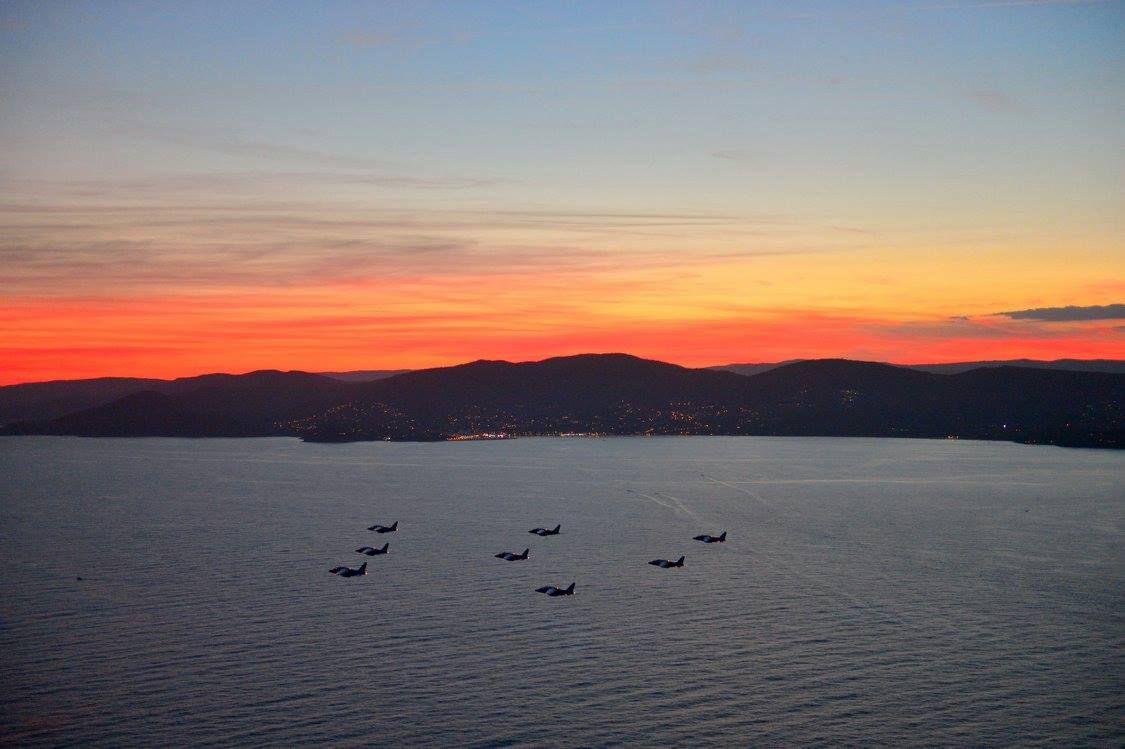
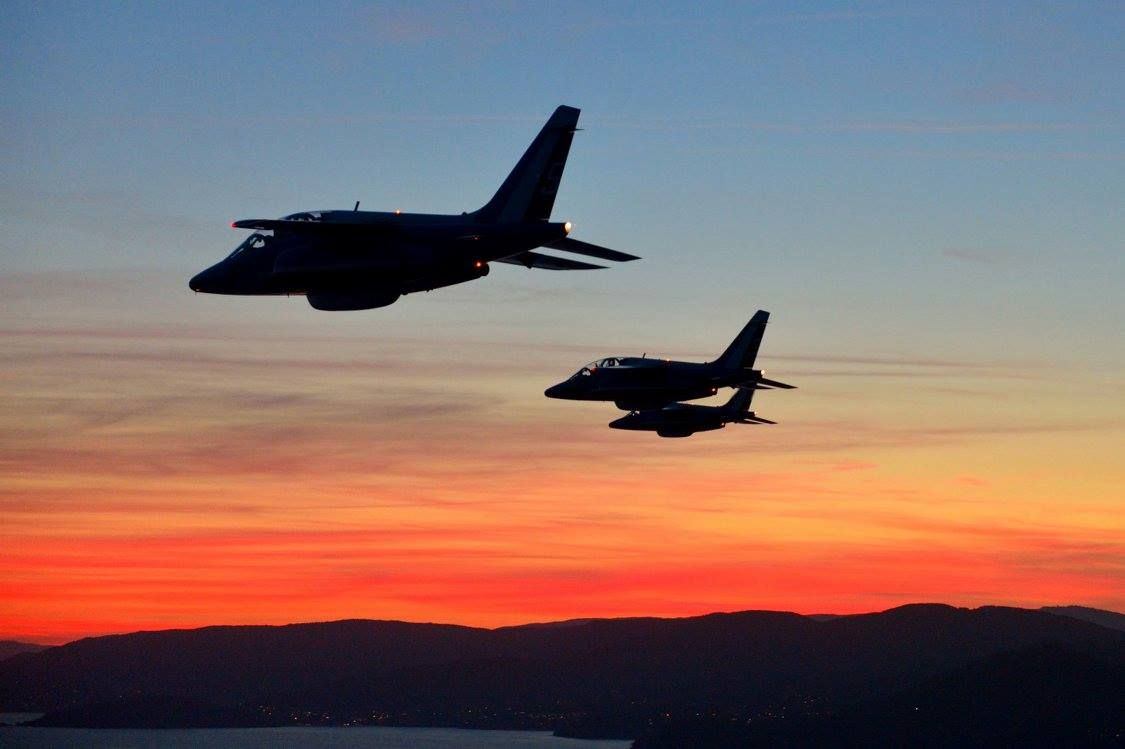
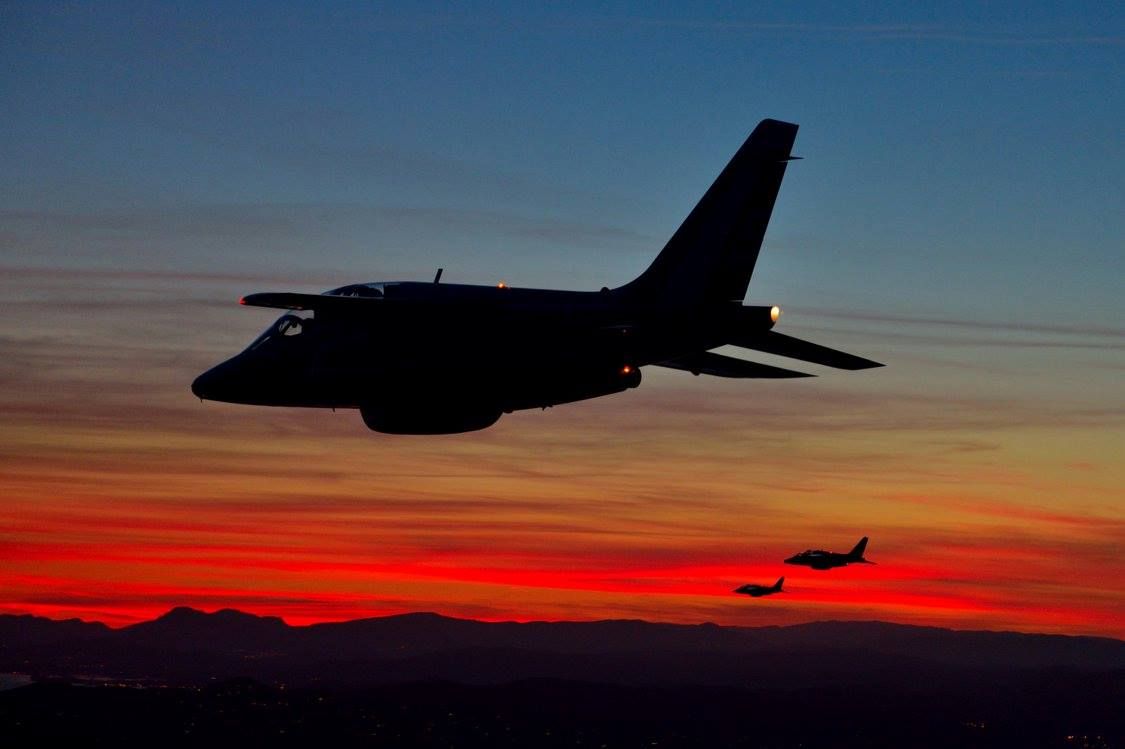

-
 Main AdminSULU SEA (Aug. 14, 2016) An MV-22 Osprey aircraft, assigned to 13th Marine Expeditionary Unit (MEU), takes off from the flight deck of amphibious assault ship USS Boxer (LHD 4). Boxer, the flagship for the Boxer Amphibious Ready Group, with the embarked 13th MEU, is operating in the U.S. 7th Fleet area of operations in support of security and stability in the Indo-Asia-Pacific region. (U.S. Navy photo by Mass Communication Specialist 3rd Class Michael T. Eckelbecker/Released)
Main AdminSULU SEA (Aug. 14, 2016) An MV-22 Osprey aircraft, assigned to 13th Marine Expeditionary Unit (MEU), takes off from the flight deck of amphibious assault ship USS Boxer (LHD 4). Boxer, the flagship for the Boxer Amphibious Ready Group, with the embarked 13th MEU, is operating in the U.S. 7th Fleet area of operations in support of security and stability in the Indo-Asia-Pacific region. (U.S. Navy photo by Mass Communication Specialist 3rd Class Michael T. Eckelbecker/Released)
A U.S. Navy EA-18G Growler aircraft assigned to Electronic Attack Squadron 135, Naval Air Station Whidbey Island, Wash., takes off for a morning sortie Aug. 15, 2016, during RED FLAG-Alaska (RF-A) 16-3 at Eielson Air Force Base, Alaska. RF-A provides realistic combat training essential to the success of air and space operations. (U.S. Air Force photo by Airman 1st Class Cassandra Whitman)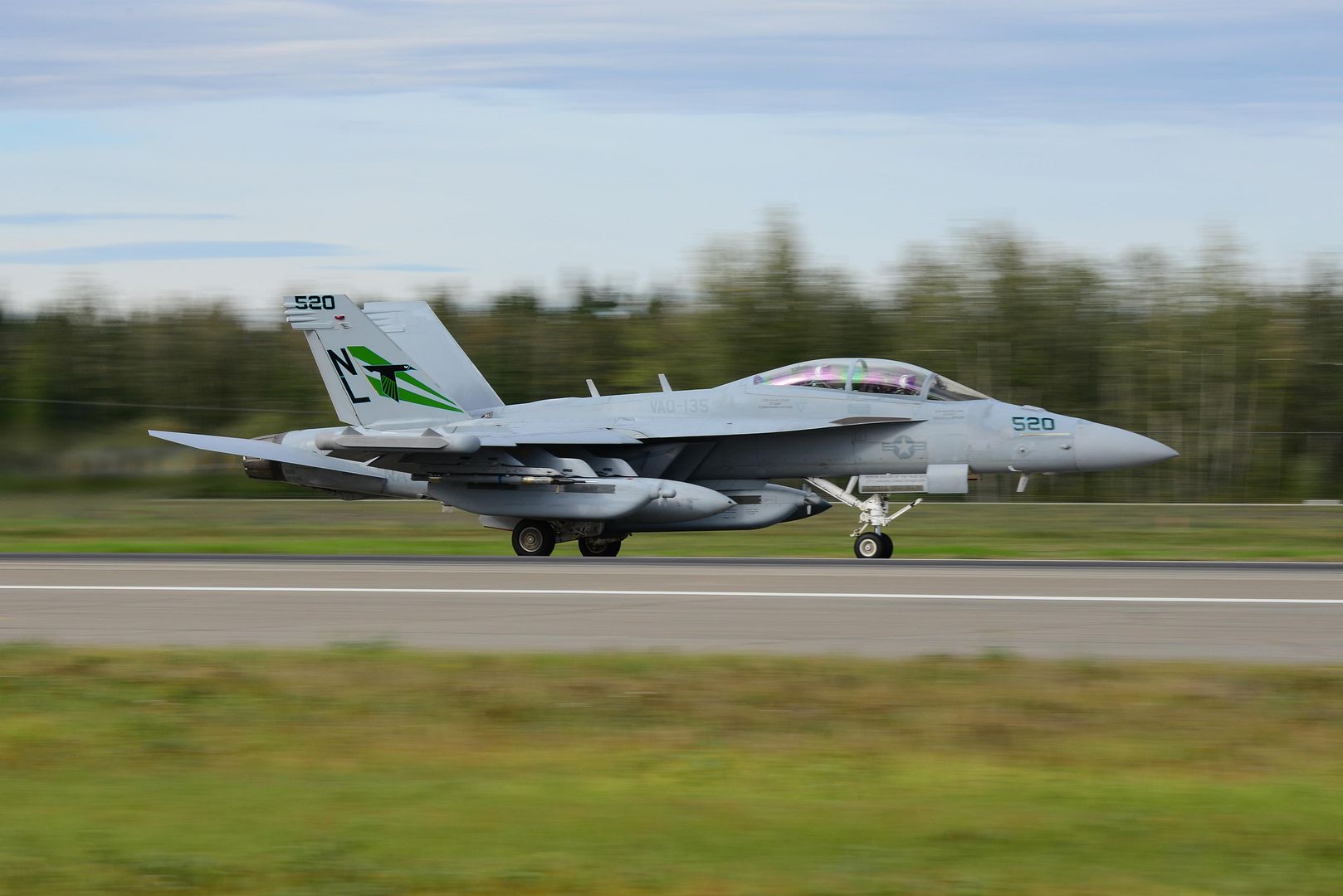
A Royal Canadian Air Force CF-18 Hornet aircraft assigned to the 409th Tactical Fighter Squadron, Canadian Forces Base Cold Lake, Alberta, takes off from the Eielson Air Force Base, Alaska, runway Aug. 15, 2016, during RED FLAG-Alaska 16-3. The aircraft will participate in a morning sortie over the Joint Pacific Alaska Range Complex airspace, which spans more than 67,000 square miles and provides a realistic training environment that allows commanders to train for full spectrum engagements, ranging from individual skills to complex, large-scale engagements. (U.S. Air Force photo by Airman 1st Class Cassandra Whitman)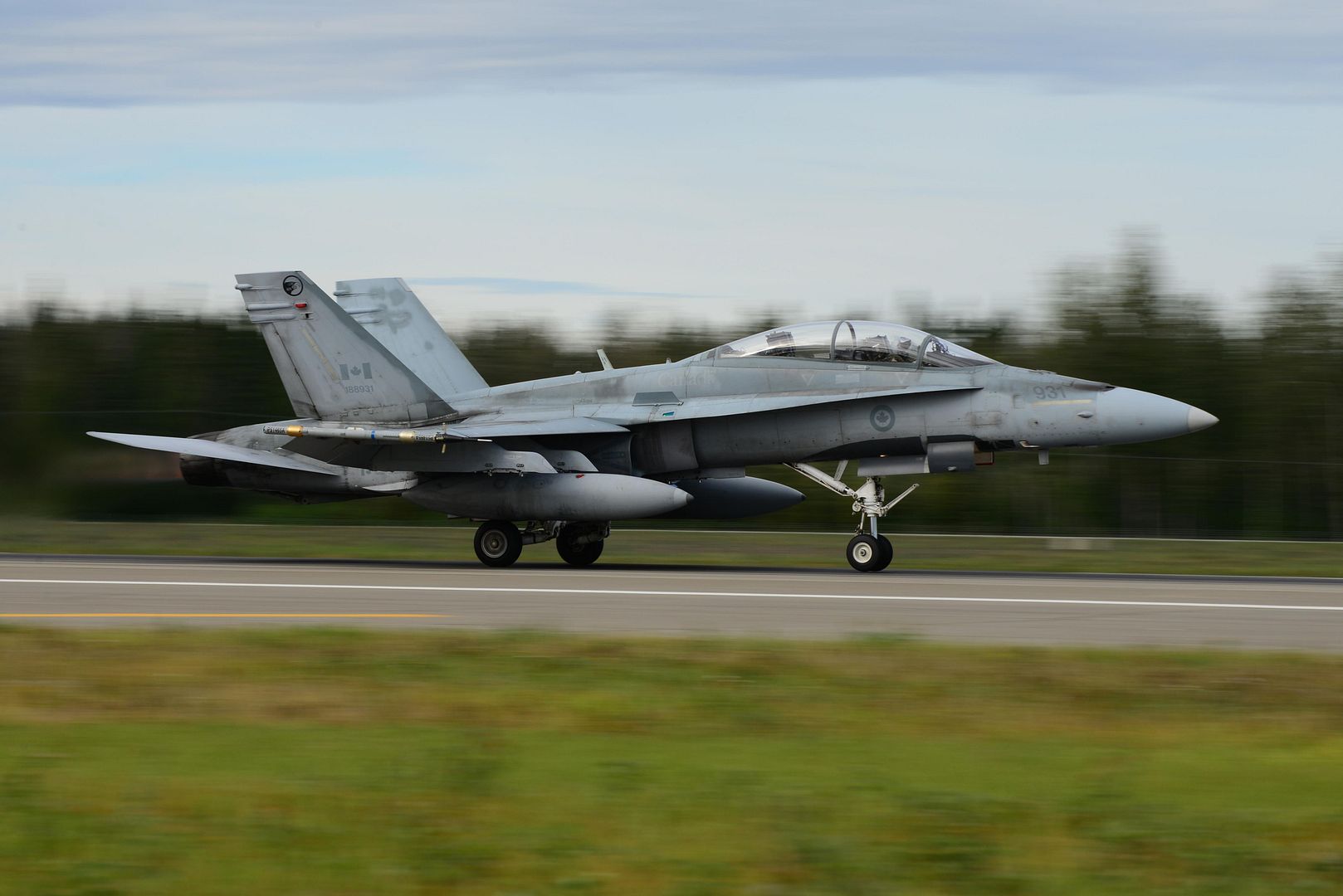
A U.S. Air Force F-15E Strike Eagle dual-role fighter aircraft assigned to the 336th Fighter Squadron out of Seymour Johnson Air Force Base, N.C., takes off for the Joint Pacific Alaska Range Complex (JPARC) from Eielson Air Force Base, Alaska, Aug. 15, 2016, during RED FLAG-Alaska 16-3. The strength of the JPARC is its expansive co-located air and land ranges as well as a significant potential for co-located air and sea ranges, which makes it the largest instrumented air, ground and electronic combat training range in the world. (U.S. Air Force photo by Airman 1st Class Cassandra Whitman)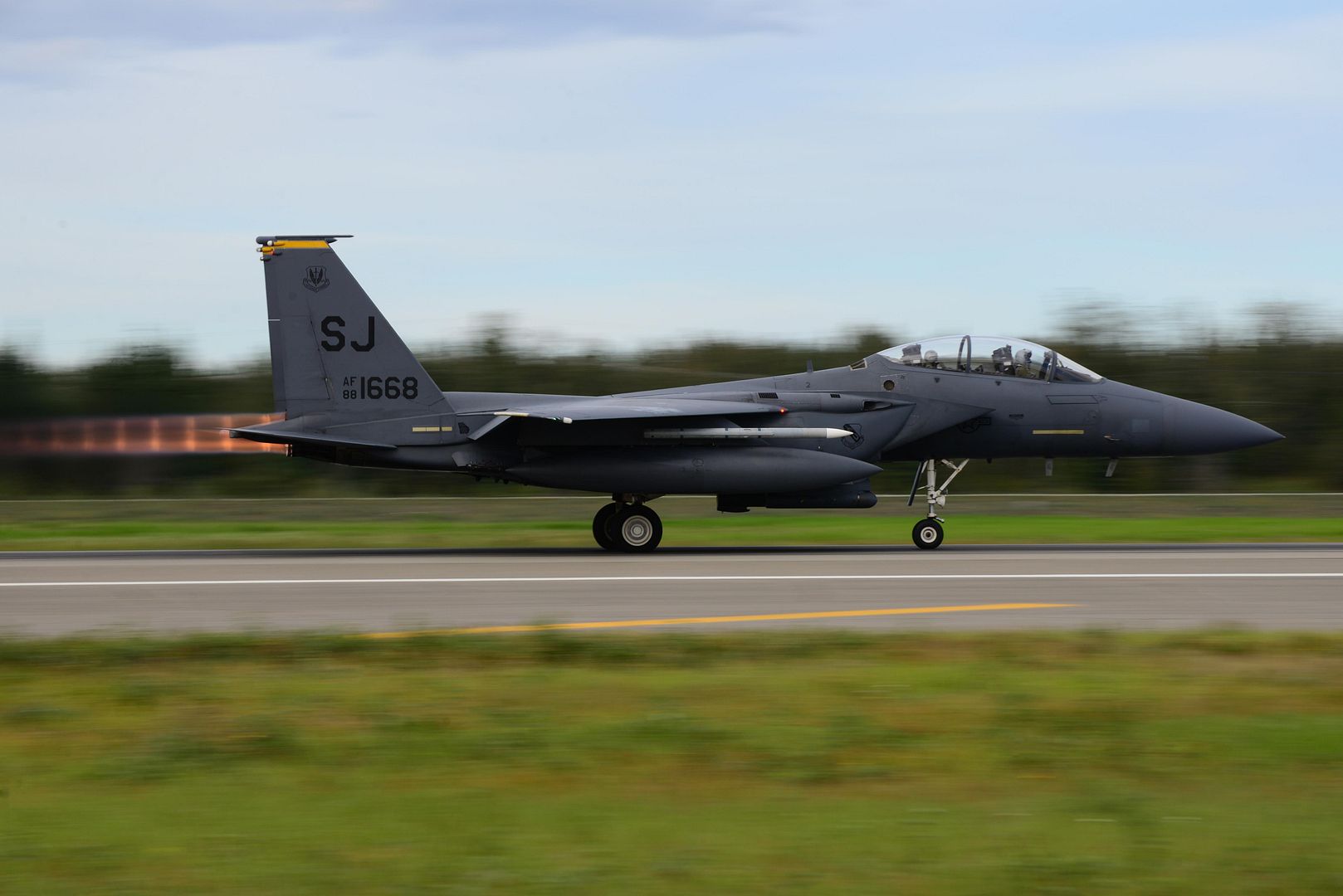
A U.S. Air Force F-16 Fighting Flacon aircraft assigned to the 18th Aggressor Squadron (AGRS) takes off from the Eielson Air Force Base, Alaska, flight line Aug. 15, 2016, during RED FLAG-Alaska (RF-A) 16-3. The 18th AGRS supports RF-A by sharing its knowledge of flying to participating units in the exercise, which ensures the U.S. and its allies receive the best air combat training possible. (U.S. Air Force photo by Airman 1st Class Cassandra Whitman)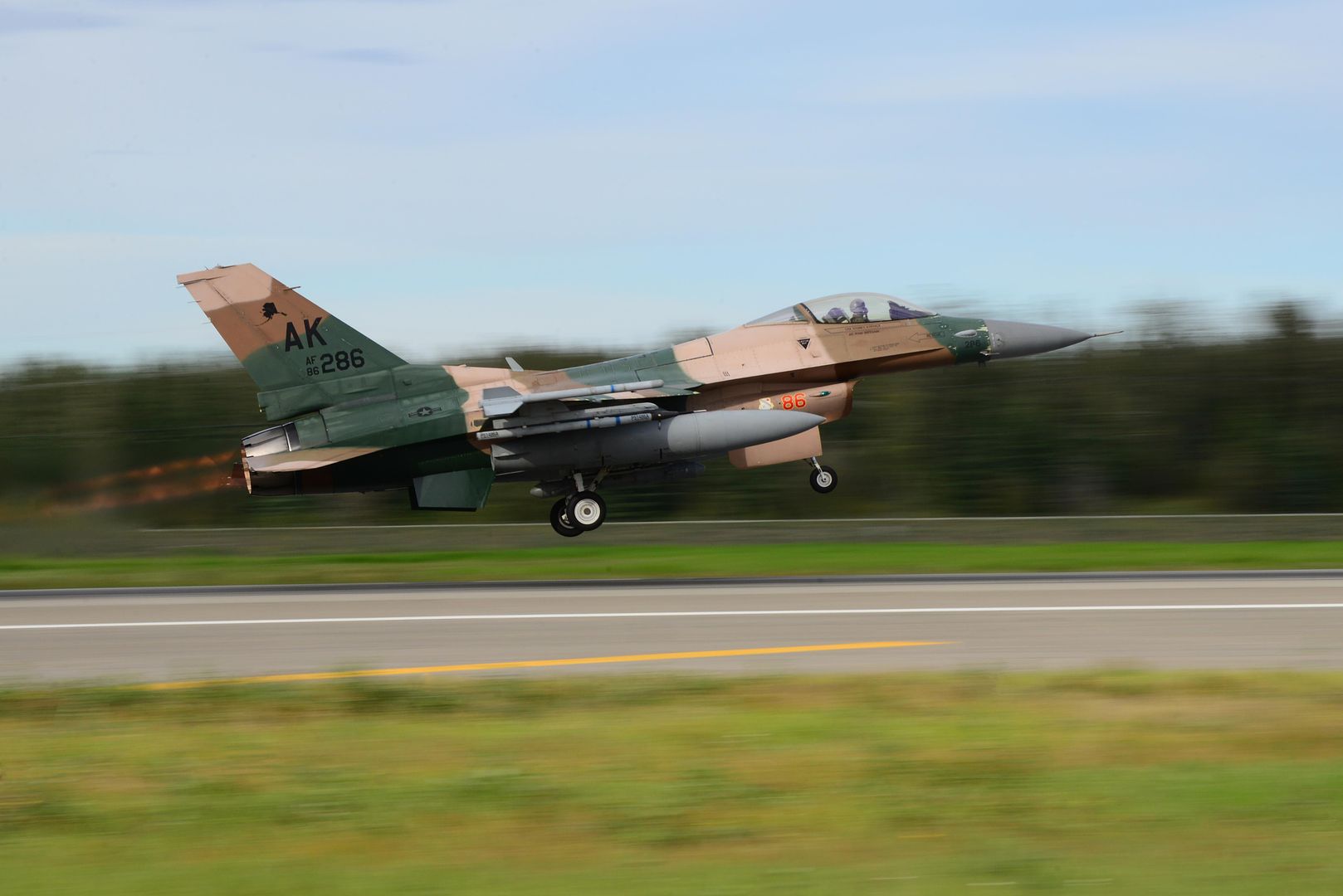
A U.S. Air Force F-16 Fighting Falcon aircraft assigned to the 35th Fighter Squadron out of Kunsan Air Base, Republic of Korea, takes off from Eielson Air Force Base, Alaska, for a morning sortie Aug. 15, 2016, during RED FLAG-Alaska (RF-A) 16-3. RF-A enables joint and international units to sharpen their combat skills by flying simulated combat sorties in a realistic threat environment while also allowing them to exchange tactics, techniques and procedures to improve interoperability. (U.S. Air Force photo by Airman 1st Class Cassandra Whitman)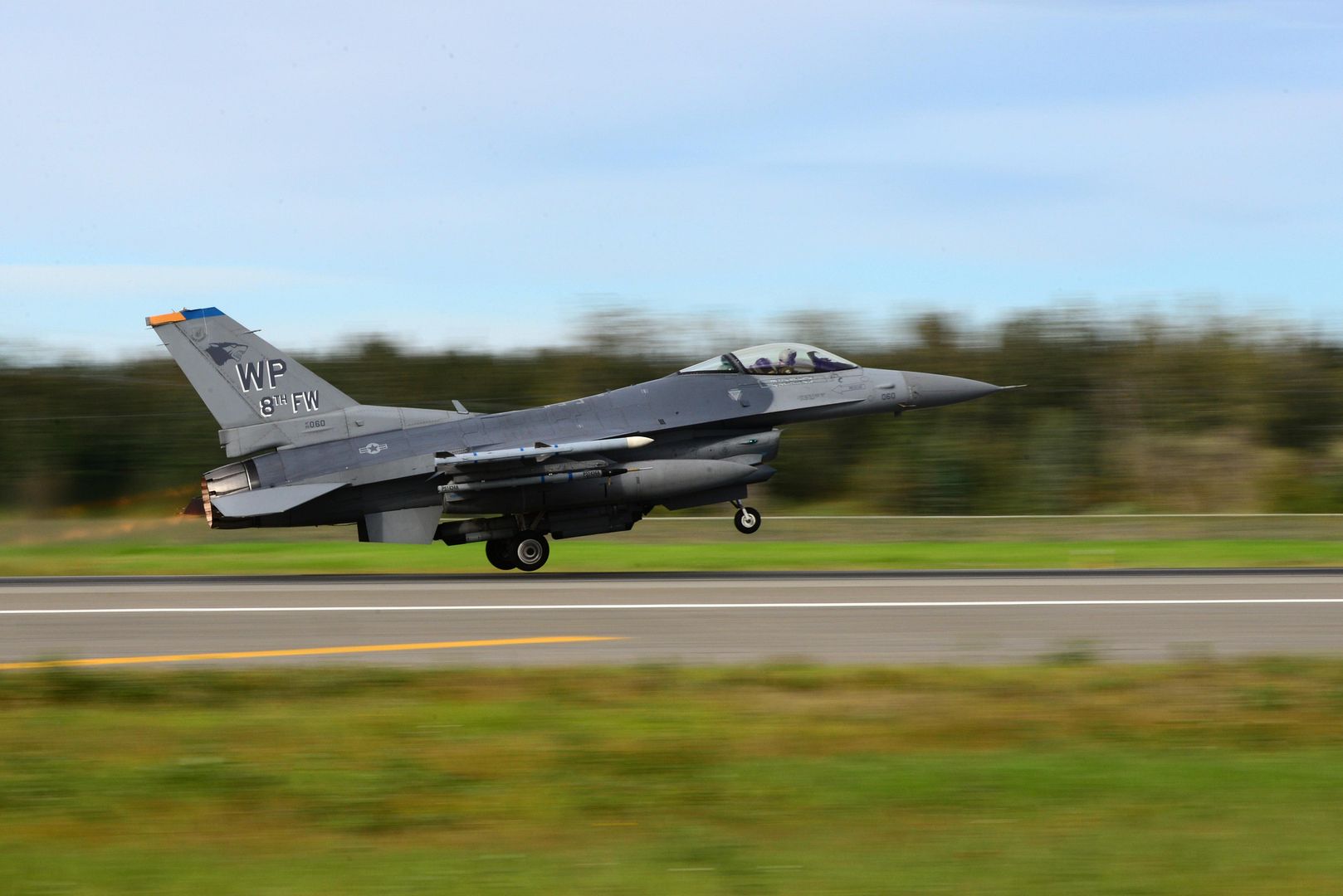
MINSK, Belarus, AUGUST 15, 2016 ? Boeing [NYSE: BA] and Belavia, the national airline company of Belarus, celebrated the delivery of the airline?s first Next-Generation 737-800 purchased directly from the manufacturer. The airplane, featuring a new distinct livery, completed its delivery flight and arrived overnight in Minsk.
Belavia selected the 737-800 based on business objectives set by the airline ? cost efficiency and maximum range for flights to Europe and Central Asia. The 737-800 flies 320 kilometers farther than its competitors while consuming five percent less fuel.
?Belavia focuses on reliability and punctuality in its work,? said Anatoly Gusarov, general director, Belavia. ?In order to ensure full adherence to our principles, we made our choice focusing on aircraft performance. Therefore, we hope to increase our dispatch reliability and punctuality rate even further after bringing 737 airplanes into operation.?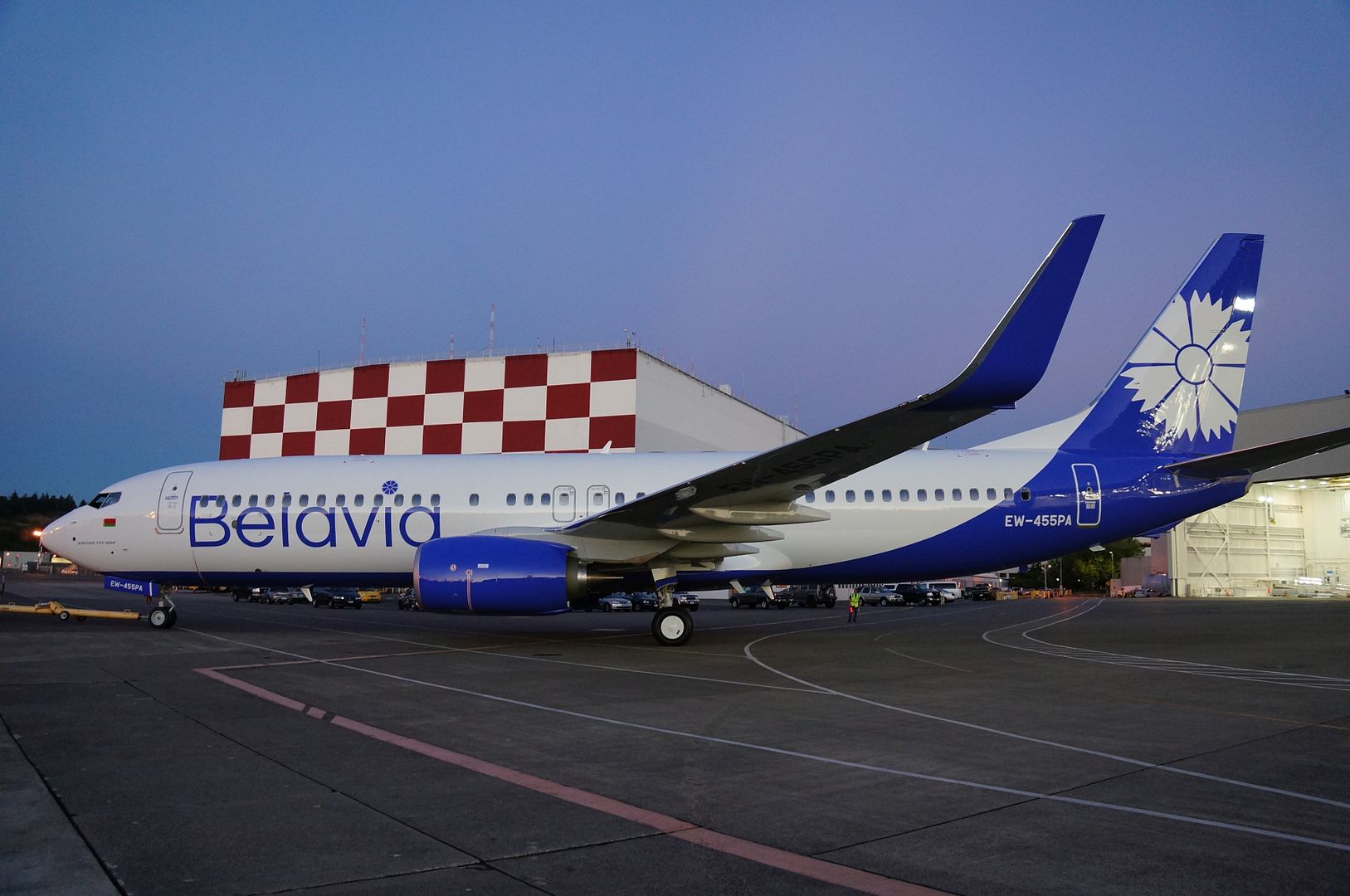
-
 Main AdminRussia?s long-range Tu-22M3 bombers have delivered their first airstrikes on terrorist targets in Syria operating from Iranian airbase. Moscow and Tehran signed a military agreement allowing Russian aircraft to station at Hamadan Airport in western Iran.
Main AdminRussia?s long-range Tu-22M3 bombers have delivered their first airstrikes on terrorist targets in Syria operating from Iranian airbase. Moscow and Tehran signed a military agreement allowing Russian aircraft to station at Hamadan Airport in western Iran.
The long range bombers with full bomb payload took off from Hamadan Airfield to attack Islamic State (IS, formerly ISIS) and Al-Nusra Front facilities in Aleppo, Deir-ez-Zor and Idlib provinces.
The strikes have eliminated five major terrorist weapons depots and training compounds in the area as well as three command posts and a big number of terrorists, the Russian Defense Ministry said.
The long-range bombers were covered by Su-30sm and Su-35s jet fighters which took off from Russia?s Khmeimim Airbase in Syria.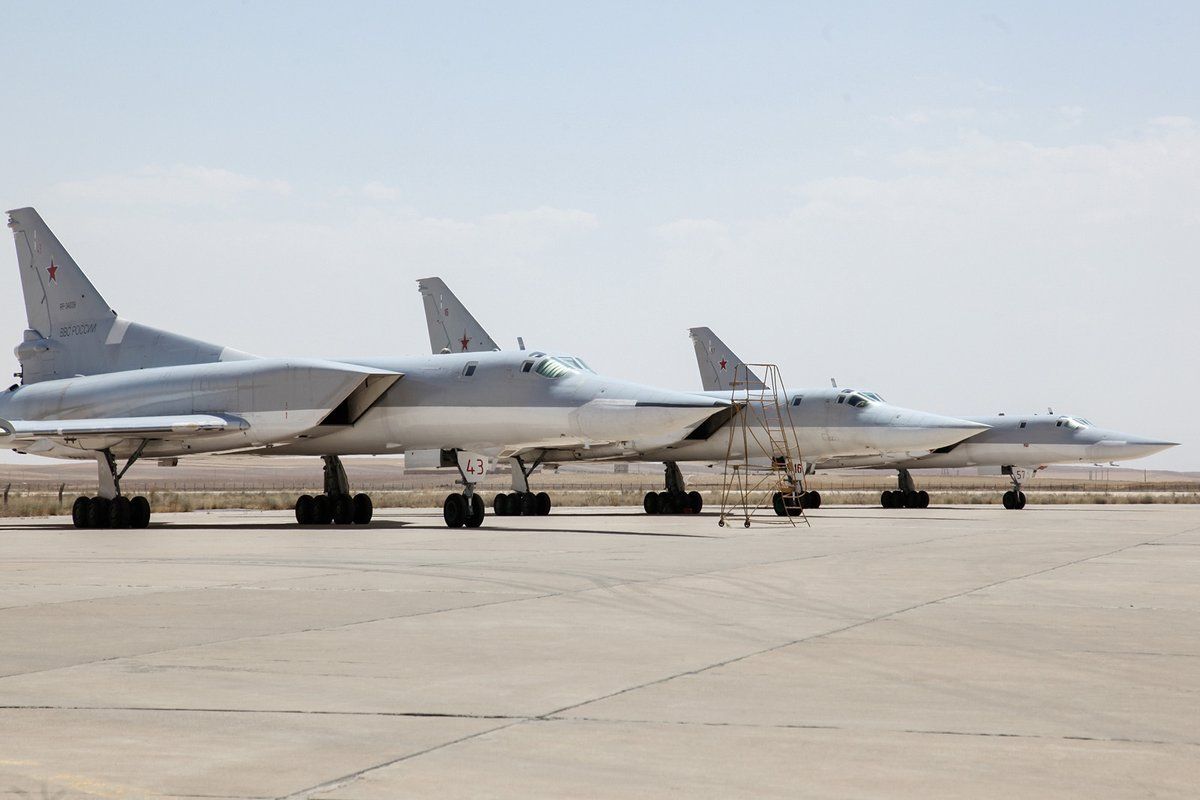
ATLANTIC OCEAN (Aug. 15, 2016) An F-35C Lightning II carrier variant, assigned to the Grim Reapers of Strike Fighter Squadron (VFA) 101, the Navy?s F-35C Fleet replacement squadron, prepares to land on the flight deck of the aircraft carrier USS George Washington (CVN 73). VFA-101 aircraft and pilots are conducting initial qualifications aboard George Washington in the Atlantic Ocean. The F-35C is expected to be Fleet operational in 2018. (U.S. Navy photo by Mass Communication Specialist 3rd Class Wyatt L. Anthony)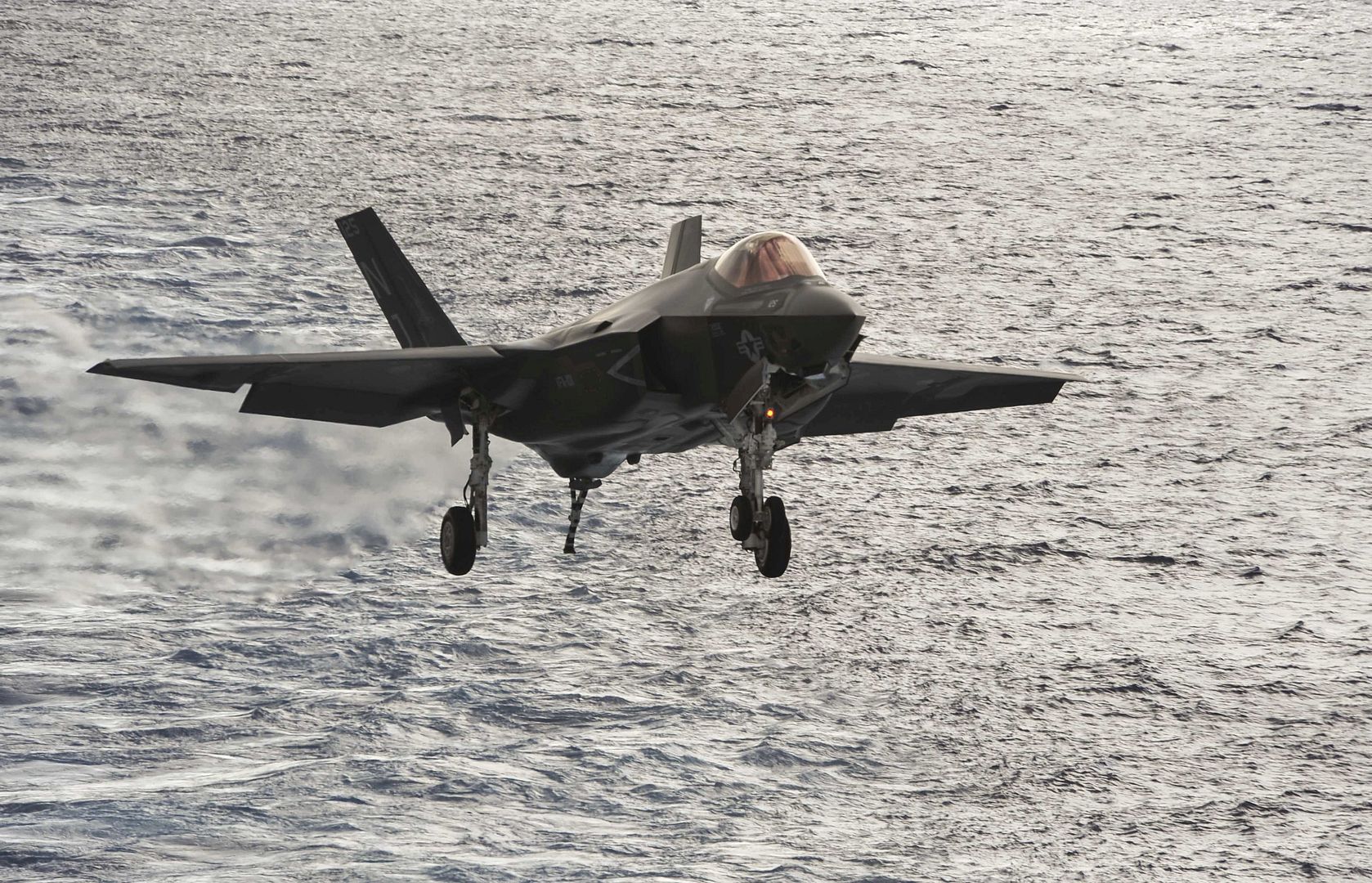
An F-15E Strike Eagle from the 492nd Fighter Squadron sits parked on the flightline in support of exercise Red Flag 16-4 at Nellis Air Force Base, Nevada, Aug 15. Red Flag is a realistic combat exercise involving U.S. and allied air forces conducing training operations on the 15,000 square mile Nevada Test and Training Range. (U.S. Air Force photo/ Tech. Sgt. Matthew Plew)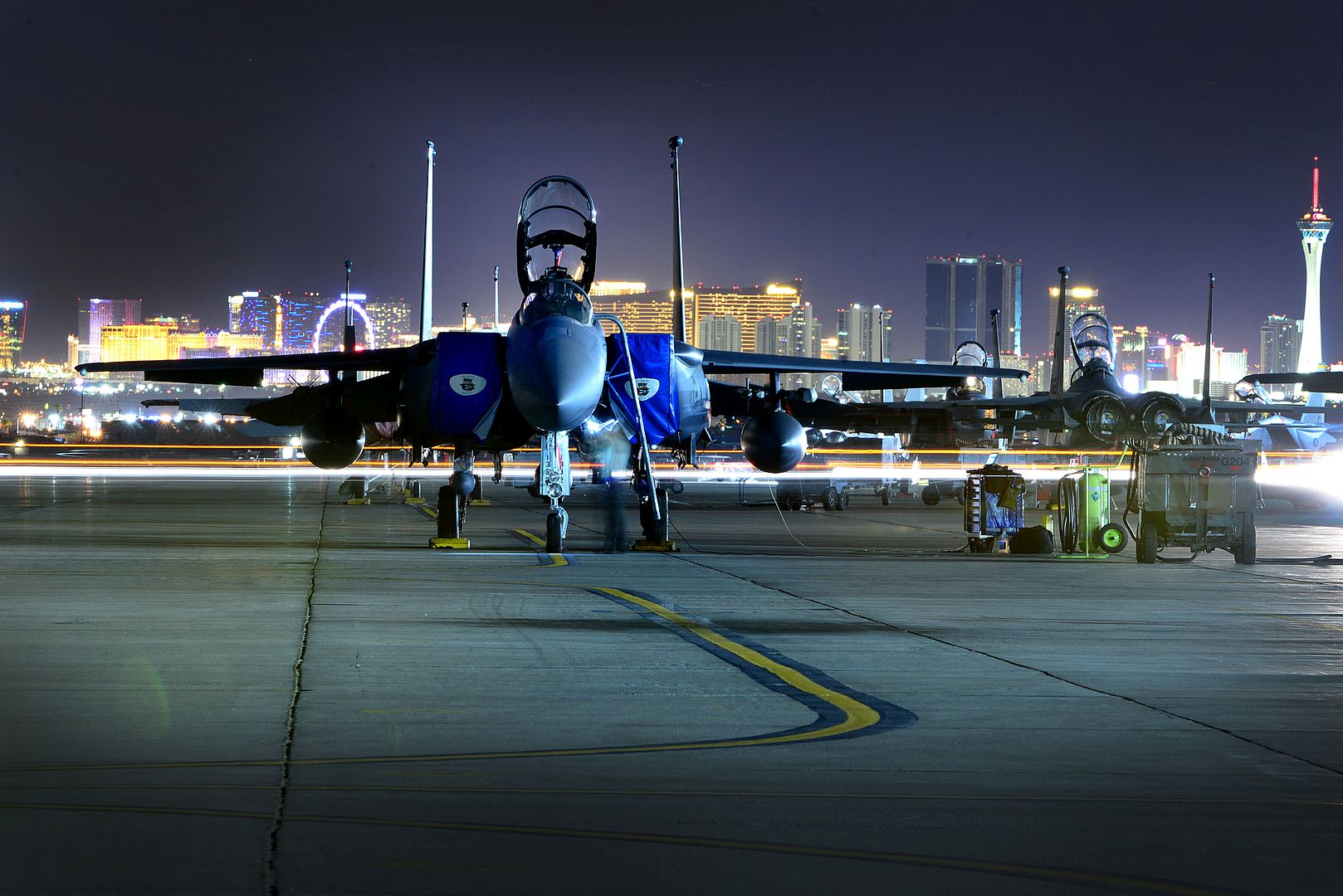
The Ministry of Defence (MOD) has awarded a contract worth around ?184 million to ensure the UK?s new supersonic stealth combat aircraft will be equipped with the latest air-to-air missile.
Designed and manufactured in the UK, ASRAAM is an advanced heat-seeking weapon which will give Royal Air Force (RAF) and Royal Navy F-35B Lightning II pilots, operating from land and the UK?s two new aircraft carriers, the ability to defeat current and future air adversaries.
The new contract will see MBDA manufacture an additional stockpile of an updated version of the weapon, allowing F-35 combat jets to use the missile beyond 2022. Work to integrate the new missile onto the UK?s F-35 fleet will be carried out under a separate contract.
Minister for Defence Procurement, Harriett Baldwin said:
?Wholly designed and built in the UK, this air-to-air missile on our F-35 aircraft will secure cutting-edge air power for the UK for years to come.
?This contract will sustain around 400 jobs across the country and is part of the MOD?s ?178 billion Equipment Plan which is backed by a defence budget that will increase every year from now until the end of the decade.?
The award is part of an overarching agreement with MBDA which is sustaining around 200 jobs at the company?s sites in Bristol, Stevenage and Bolton, with a further 200 sustained across the supply chain. Work on ASRAAM will be carried out at MBDA?s new, ?40 million state of the art manufacturing facility that is nearing completion in the Logistic North commercial development in Bolton. MBDA?s investment in this new facility is a demonstration of the company?s commitment to maintaining highly skilled engineering jobs in the region as well as to providing the very best equipment required by the UK?s armed forces.
ASRAAM, which uses a sophisticated infra-red seeker, is designed to enable UK pilots to engage and defend themselves against other aircraft.
It is capable of engaging hostile air targets ranging in size from large multi-engined aircraft to small drones.
Chief Executive Officer at the MOD?s Defence Equipment and Support organisation, Tony Douglas said:
?ASRAAM will provide vital offensive and defensive options for UK F-35 pilots against a wide range of air-to-air threats.
?The project to update the weapon and integrate it with the F-35, the world?s most advanced combat aircraft, provides a clear example of the MOD and UK industry working effectively together to provide our UK Armed Forces with the best equipment possible.?
ASRAAM is currently in service with RAF Typhoon and Tornado aircraft and is being carried daily on missions over Iraq and Syria as part of the coalition fight against Daesh.
The updated missile variant being secured under this new contract is expected to enter service on RAF Typhoon aircraft from 2018 and on RAF and Royal Navy F-35 aircraft from 2022, when the current variant will be taken out of service.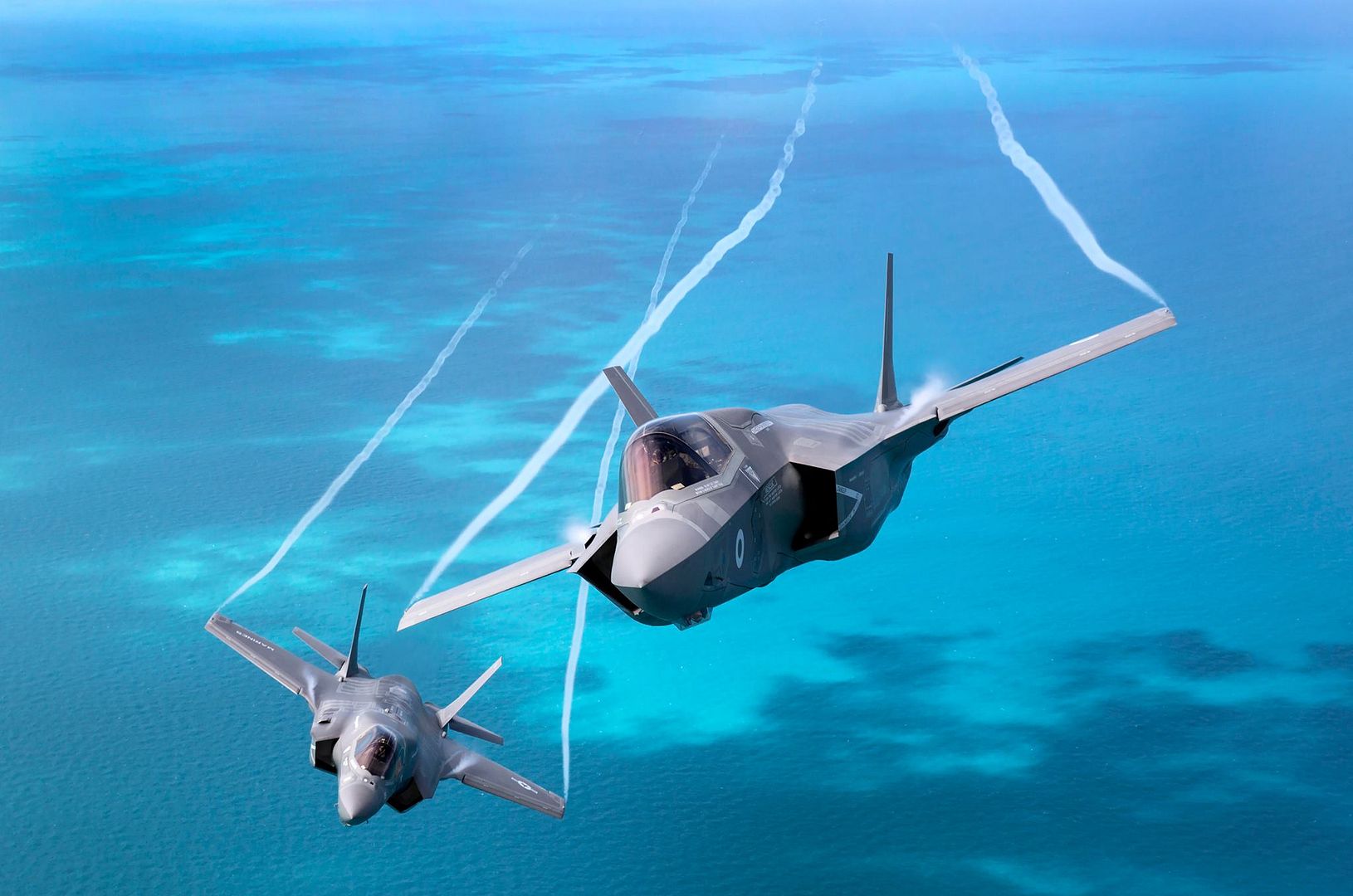
-
 Main AdminA U.S. Navy E-2C Hawkeye assigned to Carrier Airborne Early Warning Squadron (VAW) 115, with Carrier Air Wing 5, taxis into hot refueling pits at Marine Corps Air Station Iwakuni, Japan, Aug. 17, 2016. While passing through the air station for aircraft-based training, maintainers inspected and refueled the Hawkeyes before their retrograde back to Naval Air Facility Atusgi. The all-weather, carrier-based, tactical battle management airborne early warning command and control aircraft became operational in 1973 and underwent several upgrades. Variants of this aircraft are also flown by the Egyptian Air Force, Japanese Air Self-Defense Force, Republic of Singapore Air Force, Taiwan Air Force, and the French Navy. (U.S. Marine Corps photo by Lance Cpl. Donato Maffin)
Main AdminA U.S. Navy E-2C Hawkeye assigned to Carrier Airborne Early Warning Squadron (VAW) 115, with Carrier Air Wing 5, taxis into hot refueling pits at Marine Corps Air Station Iwakuni, Japan, Aug. 17, 2016. While passing through the air station for aircraft-based training, maintainers inspected and refueled the Hawkeyes before their retrograde back to Naval Air Facility Atusgi. The all-weather, carrier-based, tactical battle management airborne early warning command and control aircraft became operational in 1973 and underwent several upgrades. Variants of this aircraft are also flown by the Egyptian Air Force, Japanese Air Self-Defense Force, Republic of Singapore Air Force, Taiwan Air Force, and the French Navy. (U.S. Marine Corps photo by Lance Cpl. Donato Maffin)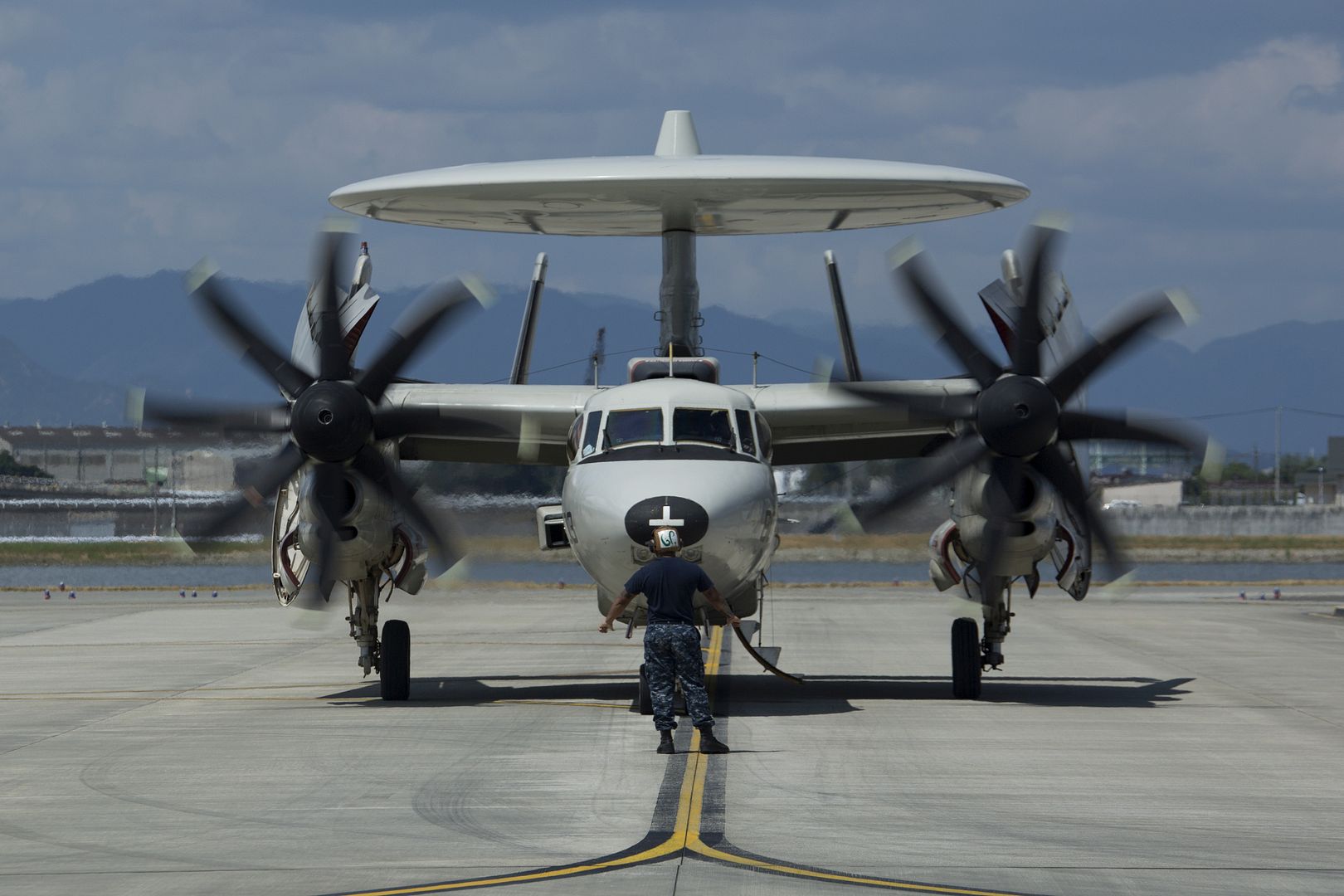
A U.S. Air Force B-52 Stratofortress, B-1 Lancer and B-2 Spirit fly over Guam after launching from Andersen Air Force Base, Guam, for an integrated bomber operation Aug.17, 2016. This mission marks the first time in history that all three of Air Force Global Strike Command's strategic bomber aircraft are simultaneously conducting integrated operations in the U.S. Pacific Command area of operations. As of Aug. 15, the B-1 Lancer will be temporarily deployed to Guam in support of U.S. Pacific Command's Continuous Bomber Presence mission. (U.S. Air Force photo's by Senior Airman Joshua Smoot)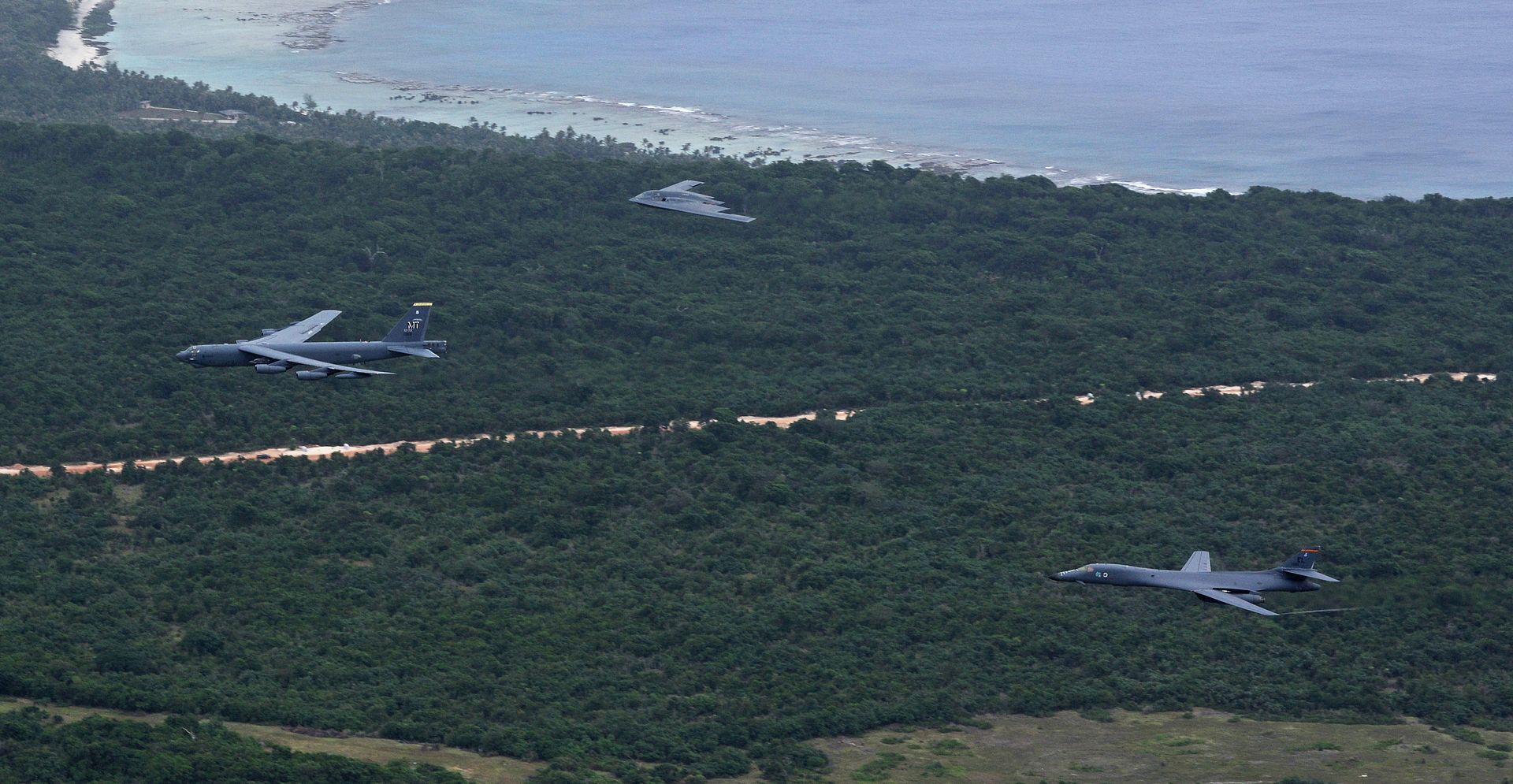
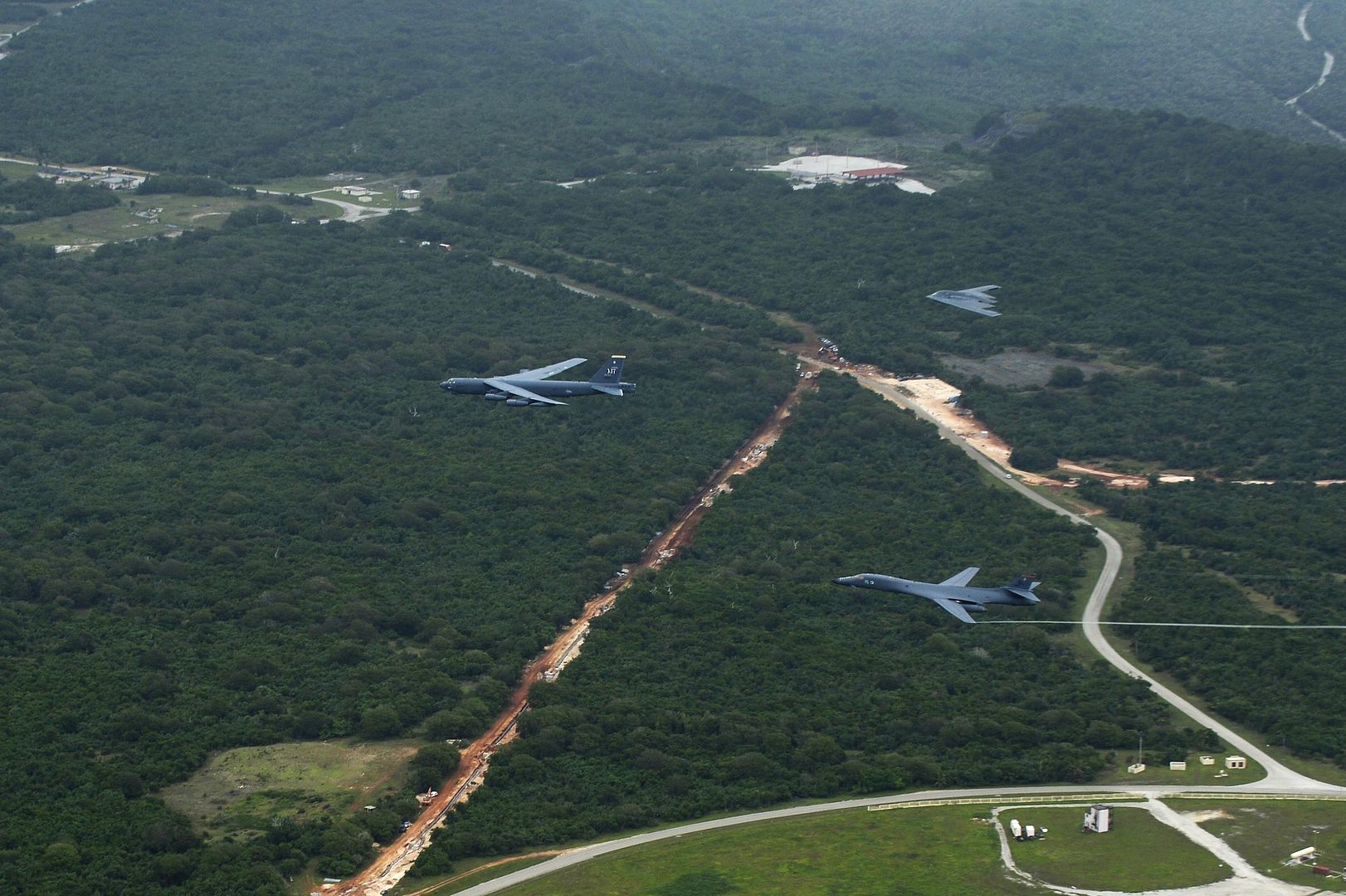
A Colombian Air Force A-29B Super Tucano taxis during Exercise Green Flag East at Barksdale Air Force Base, La., Aug. 17, 2016. Four Colombian A-29B Super Tucanos were allotted for the exercise which provides simulated ground support to U.S. Army forces. (U.S. Air Force photo / Senior Airman Mozer O. Da Cunha)
A U.S. Air Force B-52 Stratofortress takes off from Andersen Air Force Base, Guam, for an integrated bomber operation Aug.17, 2016. This mission marks the first time in history that all three of Air Force Global Strike Command's strategic bomber aircraft are simultaneously conducting integrated operations in the U.S. Pacific Command area of operations. As of Aug. 15, the B-1 Lancer will be temporarily deployed to Guam in support of U.S. Pacific Command's Continuous Bomber Presence mission. (U.S. Air Force photo by Tech Sgt Richard P. Ebensberger/Released)
A U.S. Air Force B-52 Stratofortress taxis at Andersen Air Force Base, Guam, for an integrated bomber operation Aug.17, 2016. This mission marks the first time in history that all three of Air Force Global Strike Command's strategic bomber aircraft are simultaneously conducting integrated operations in the U.S. Pacific Command area of operations. As of Aug. 15, the B-1 Lancer will be temporarily deployed to Guam in support of U.S. Pacific Command's Continuous Bomber Presence mission. (U.S. Air Force photo by Tech Sgt Richard P. Ebensberger/Released)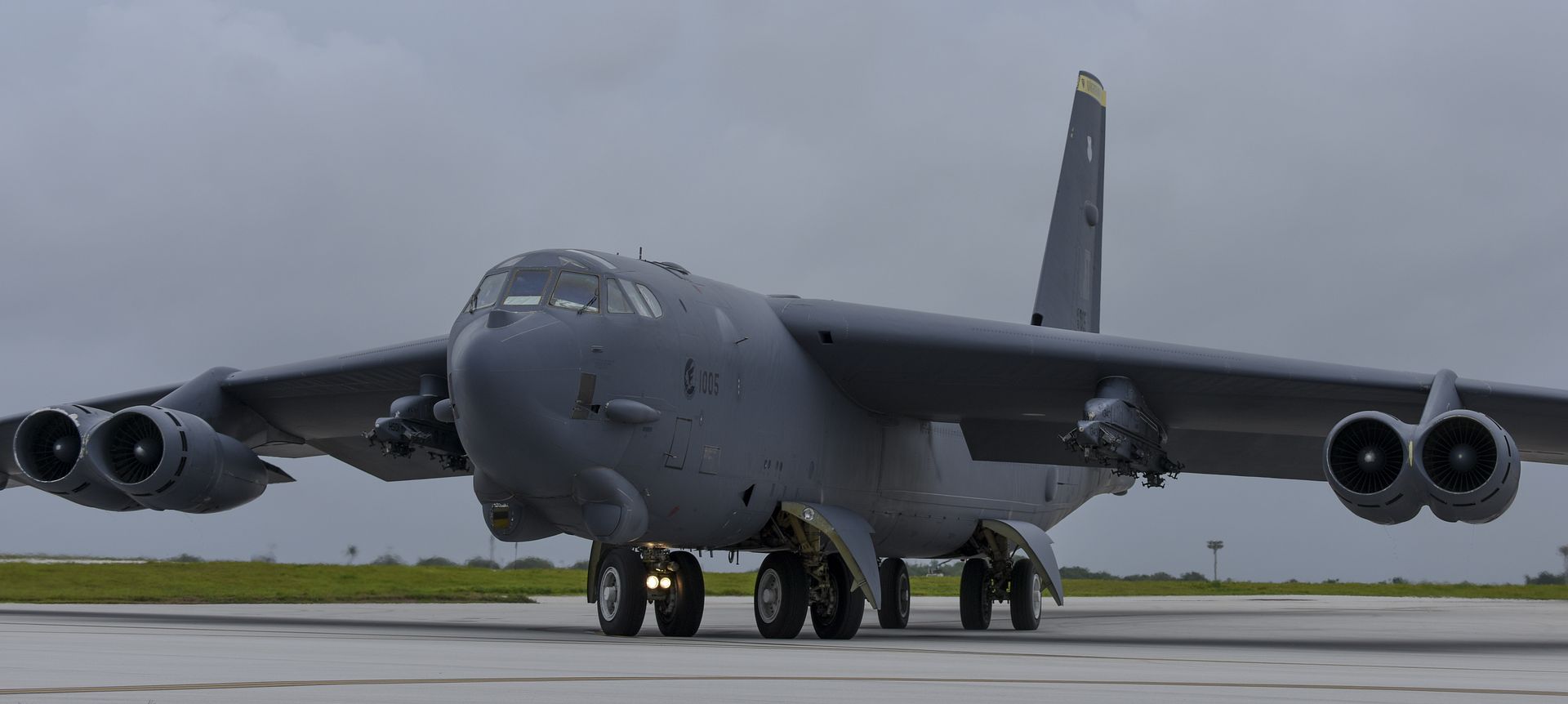
U.S. Air Force F-16 Fighting Falcons from the Texas Air National Guard 149th Fighter Wing arrive at Pearl Harbor-Hickam, Hawaii on Aug. 17, 2016. The visiting airmen and aircraft are participating in the Hawaii Air National Guard's Sentry Aloha exercise. This Sentry Aloha iteration will involve more than 800 personnel and more than 40 aircraft from eight other states and territories.(U.S. Air National Guard photo by Tech. Sgt. Alison Bruce-Maldonado/released)
A U.S. Air Force B-1 Lancer takes off at Andersen Air Force Base, Guam, for an integrated bomber operation Aug.17, 2016. This mission marks the first time in history that all three of Air Force Global Strike Command's strategic bomber aircraft are simultaneously conducting integrated operations in the U.S. Pacific Command area of operations. As of Aug. 15, the B-1 Lancer will be temporarily deployed to Guam in support of U.S. Pacific Command's Continuous Bomber Presence mission. (U.S. Air Force photo by Airman 1st Class Arielle Vasquez/Released)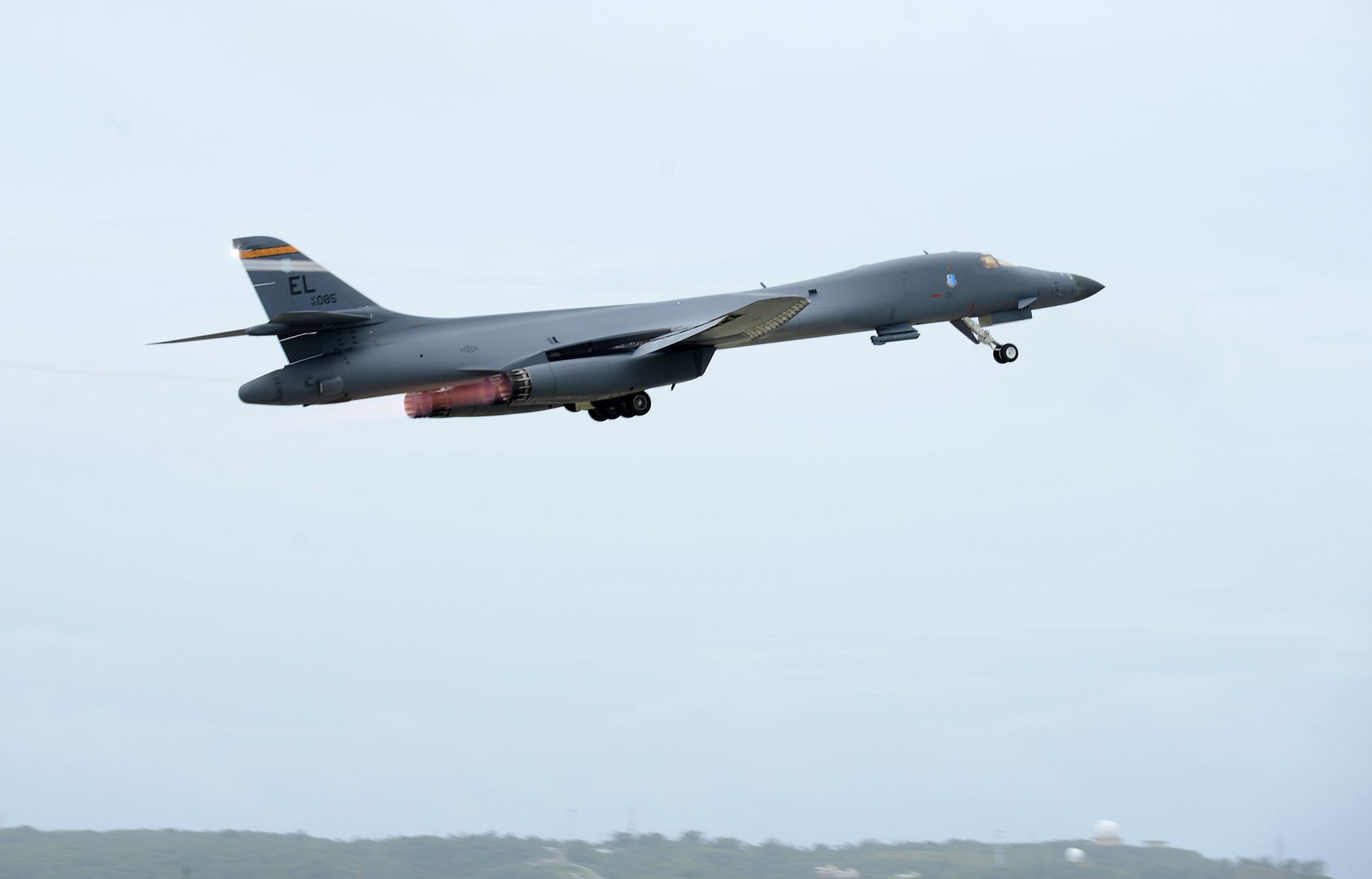
A U.S. Air Force B-2 Spirit takes off at Andersen Air Force Base, Guam, for an integrated bomber operation Aug.17, 2016. This mission marks the first time in history that all three of Air Force Global Strike Command's strategic bomber aircraft are simultaneously conducting integrated operations in the U.S. Pacific Command area of operations. As of Aug. 15, the B-1 Lancer will be temporarily deployed to Guam in support of U.S. Pacific Command's Continuous Bomber Presence mission. (U.S. Air Force photo by Airman 1st Class Arielle Vasquez/Released)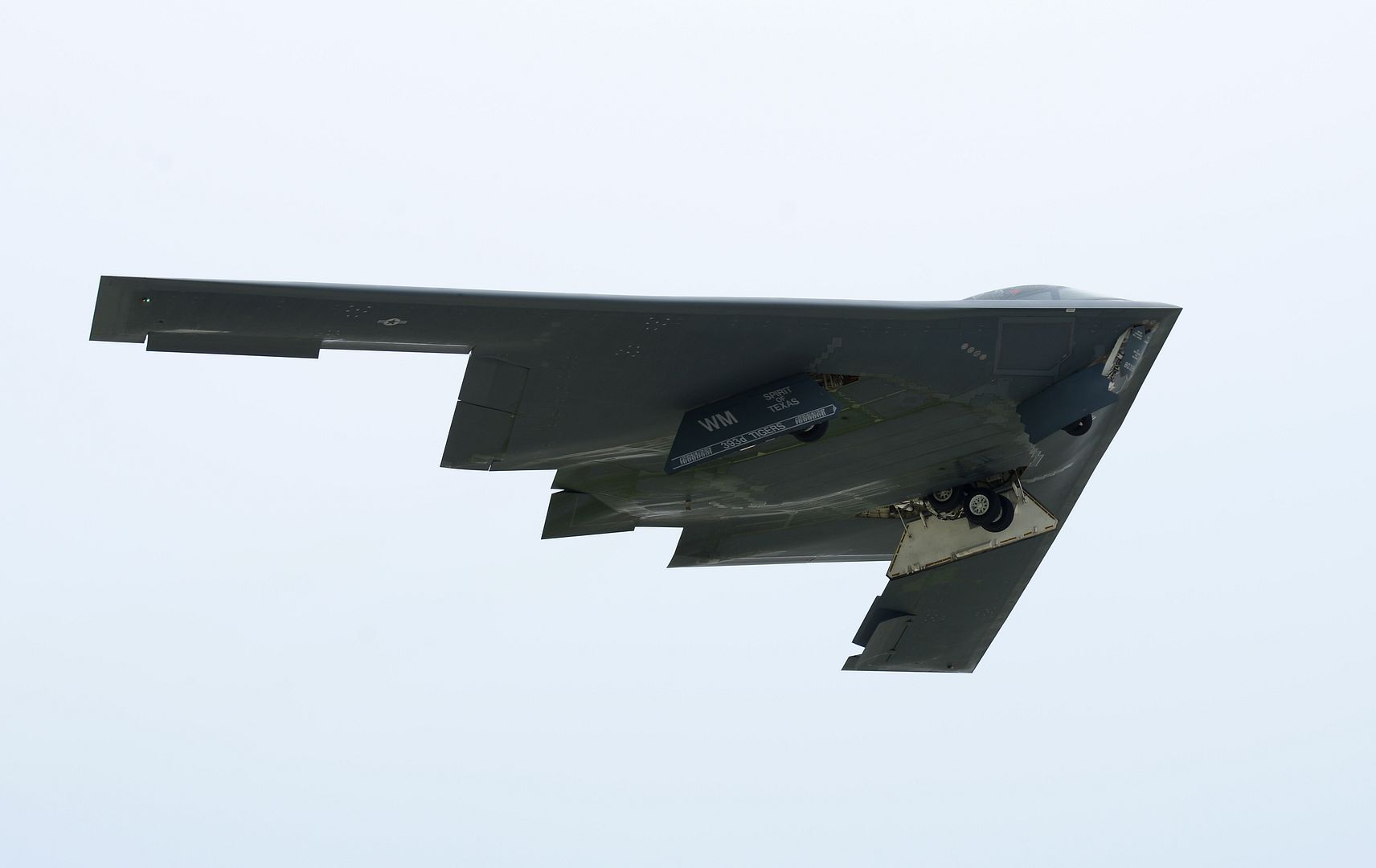
SEATTLE, Aug. 17, 2016 /PRNewswire/ -- Boeing [NYSE: BA] and Nok Air partnered today to launch a special humanitarian aid mission to Thailand.
With the help of the international non-profit organization Vital Voices, whose mission is to invest in and empower women leaders, the airline's 22nd Next-Generation 737-800 will transport and deliver nearly 30 boxes full of relief items including clothes and school supplies.
The items are headed to The Children's Advocacy Center Thailand (ACT), a non-profit organization dedicated to better the lives of abused children and youth in Thailand. Representatives from ACT will deliver the aid to impacted children and youth throughout Thailand.
"We are honored to play an important role for the well-being of our children and youth," said Nok Air CEO Patee Sarasin. "Providing timely supplies to those in need will affect the lives of many in the region. Nok Air is proud to continue playing a vital role in cultivating the well-being of our community."
As part of the Global Corporate Citizenship program, Boeing is committed to building better communities worldwide.
"We are honored that Nok Air partnered with The Boeing Company to deliver humanitarian aid to the many children in Thailand who are in need," said Sam Whiting, Director, Global Corporate Citizenship, Boeing Commercial Airplanes. "We look forward to working closely with Nok Air and non-profit organizations like ACT in Thailand to identify future opportunities."
Based in Bangkok, Thailand, Nok Air is a low-cost carrier that operates an all-Boeing fleet. As part of a tradition in naming its new airplanes, Nok Air has designated this particular airplane 'Fah Kram,' which means blue skies.
The airline currently has two additional Next-Generation 737s on order with Boeing after today's delivery. Nok Air is also a 737 MAX customer with eight 737 MAX 8 airplanes on order.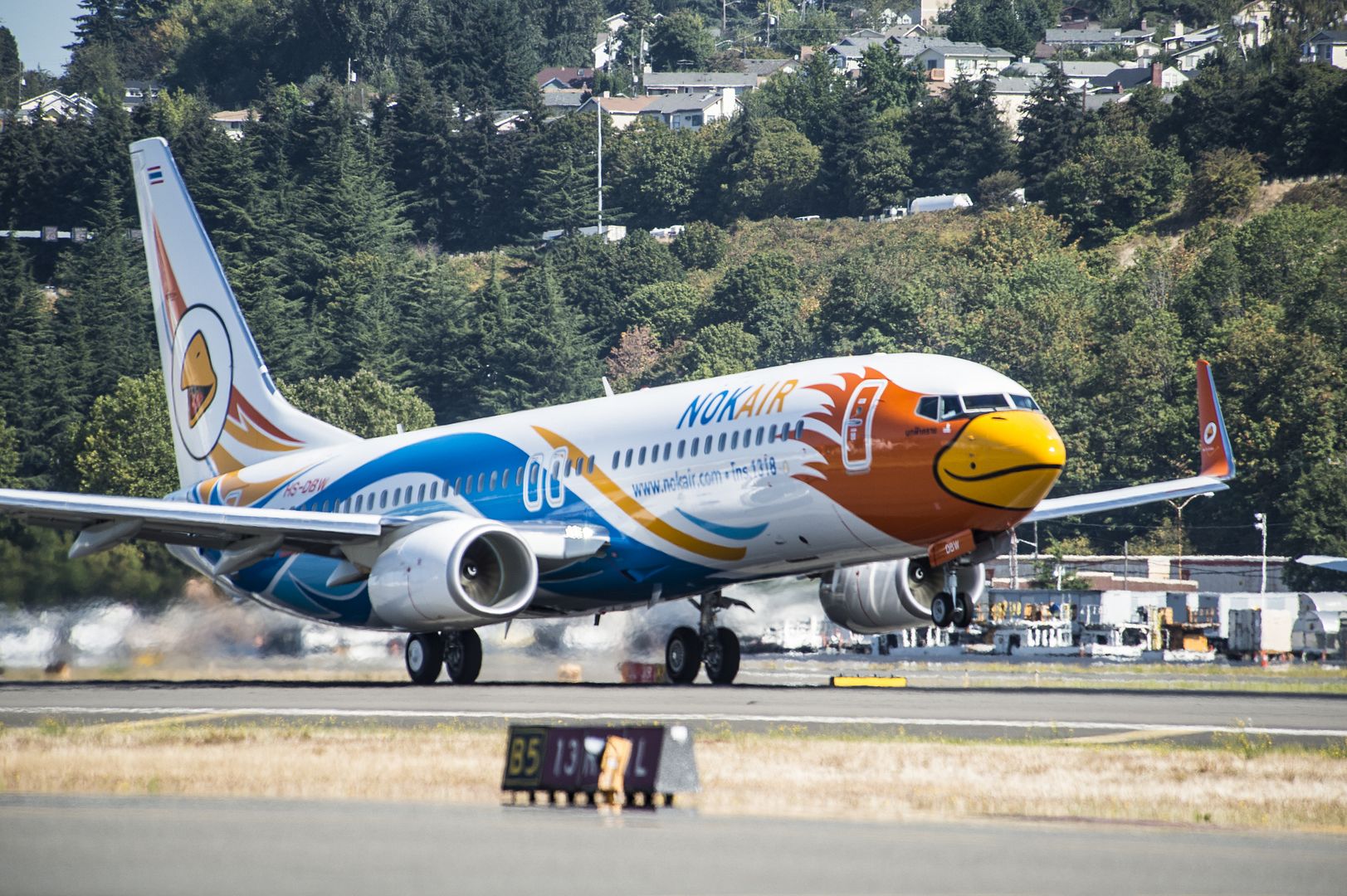
EVERETT, Wash., Aug. 17, 2016 /PRNewswire/ -- Boeing [NYSE:BA] and ANA (All Nippon Airways) celebrated the delivery of the airline's 50th 787 Dreamliner during a ceremony today at Boeing's Everett Delivery Center. The milestone marks yet another record for ANA as it becomes the world's first airline to operate 50 787 Dreamliners.
"The 787 Dreamliner has played a significant role in opening up new routes into new markets, while also forming the backbone of our long-haul fleet," said Osamu Shinobe, president and CEO, ANA. "As the launch customer of the 787 Dreamliner family, we are proud to welcome the 50th 787 Dreamliner into our fleet, where it will continue to serve our passengers with the most innovative and memorable flying experience."
As part of efforts to expand its global network, ANA also announced plans to launch new routes from Tokyo, Narita to Phnom Penh, Cambodia in September this year and Mexico City, Mexico in February next year using 787 Dreamliners.
ANA became the launch customer of the 787 when it purchased 50 in 2004, and was the first to bring the airplane into service in 2011. The airline operates more than 11 percent of all 787s around the world today and has flown an estimated 125,000 flights with the Dreamliner.
"As the launch customer of the 787 and our largest 787 customer, we are honored to celebrate this important milestone with ANA," said Boeing Commercial Airplanes President and CEO Ray Conner. "ANA is a valued Boeing customer and has been a vital partner on this program. Today's event demonstrates the strength of our enduring relationship and we look forward to introducing the 787-10 to ANA in the coming years to complete the entire family of 787 Dreamliners in their fleet."
Already the world's largest Dreamliner operator, ANA has an additional 33 787s on order, including the longest and newest member of the family, the 787-10. The airline also has 20 777-9 airplanes on order.
ANA recently showcased its 50th 787 Dreamliner at the Farnborough International Airshow, performing high-performance demonstration flights for thousands in attendance and wowing millions of fans around the world on the internet.
The Boeing 787 Dreamliner is an all-new, super-efficient family of airplanes that brings the speed and range of big jets to the middle of the market. Boeing designed the 787 family with superior efficiency, allowing airlines to open new routes profitably and fly directly where passengers wish in exceptional comfort.
Since entering service in 2011, the 787 has flown more than 109 million passengers on more than 500 routes around the world, including more than 120 new nonstop routes made possible through its efficiency.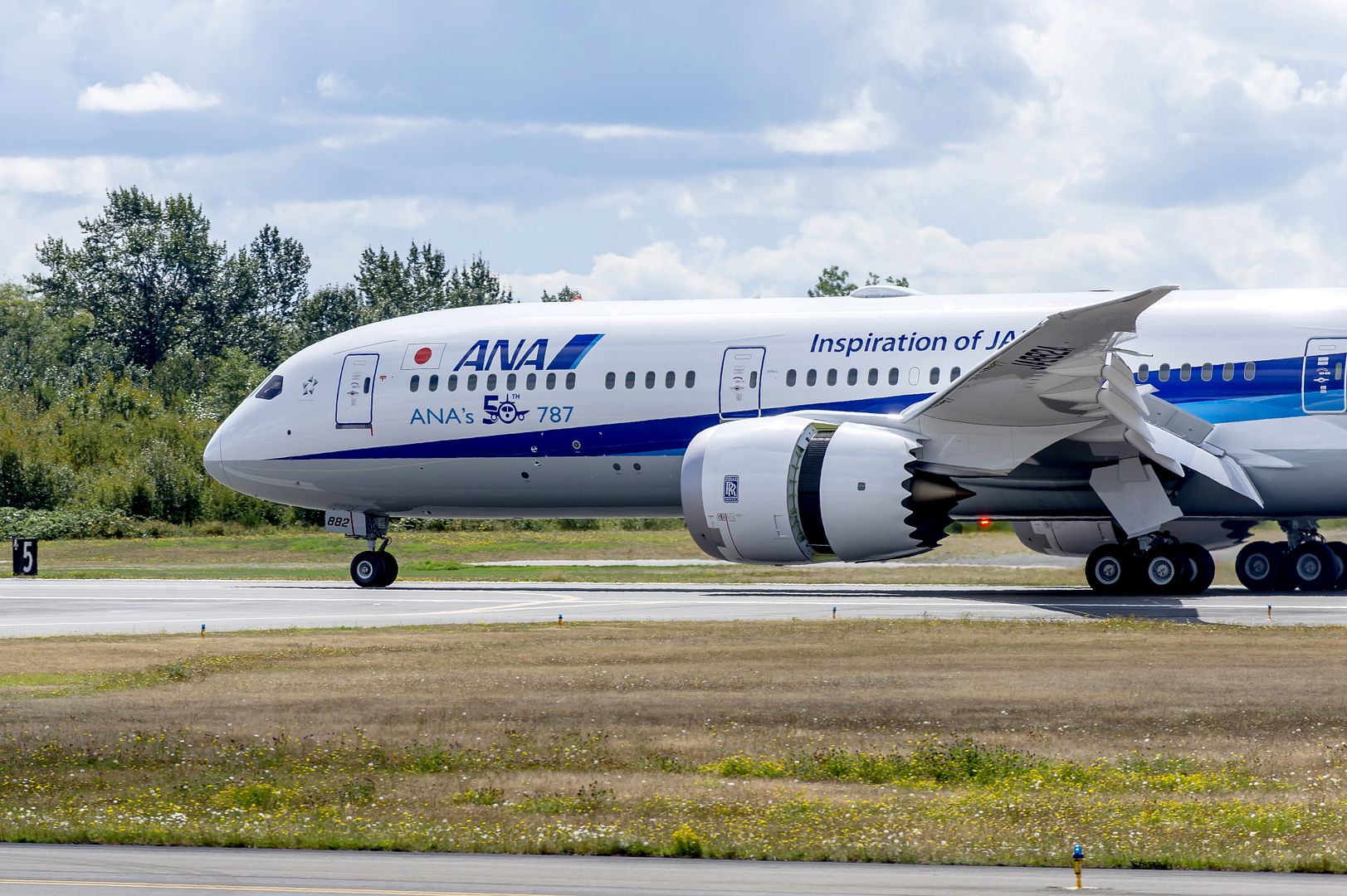
-
8 years agoSat Aug 20 2016, 11:53am
 Main AdminA U.S. Air Force B-52 Stratofortress lands at Andersen Air Force Base, Guam, after returning from a mission in support of Exercise Pitch Black 2016 (PB16) in Australia, Aug.18, 2016. PB16 allows participant nations to exercise deployed units in the tasking, planning and execution of offensive counter air and offensive air support while utilizing one of the largest training airspace areas in the world. (U.S. Air Force photo's by Tech. Sgt. Richard P. Ebensberger)
Main AdminA U.S. Air Force B-52 Stratofortress lands at Andersen Air Force Base, Guam, after returning from a mission in support of Exercise Pitch Black 2016 (PB16) in Australia, Aug.18, 2016. PB16 allows participant nations to exercise deployed units in the tasking, planning and execution of offensive counter air and offensive air support while utilizing one of the largest training airspace areas in the world. (U.S. Air Force photo's by Tech. Sgt. Richard P. Ebensberger)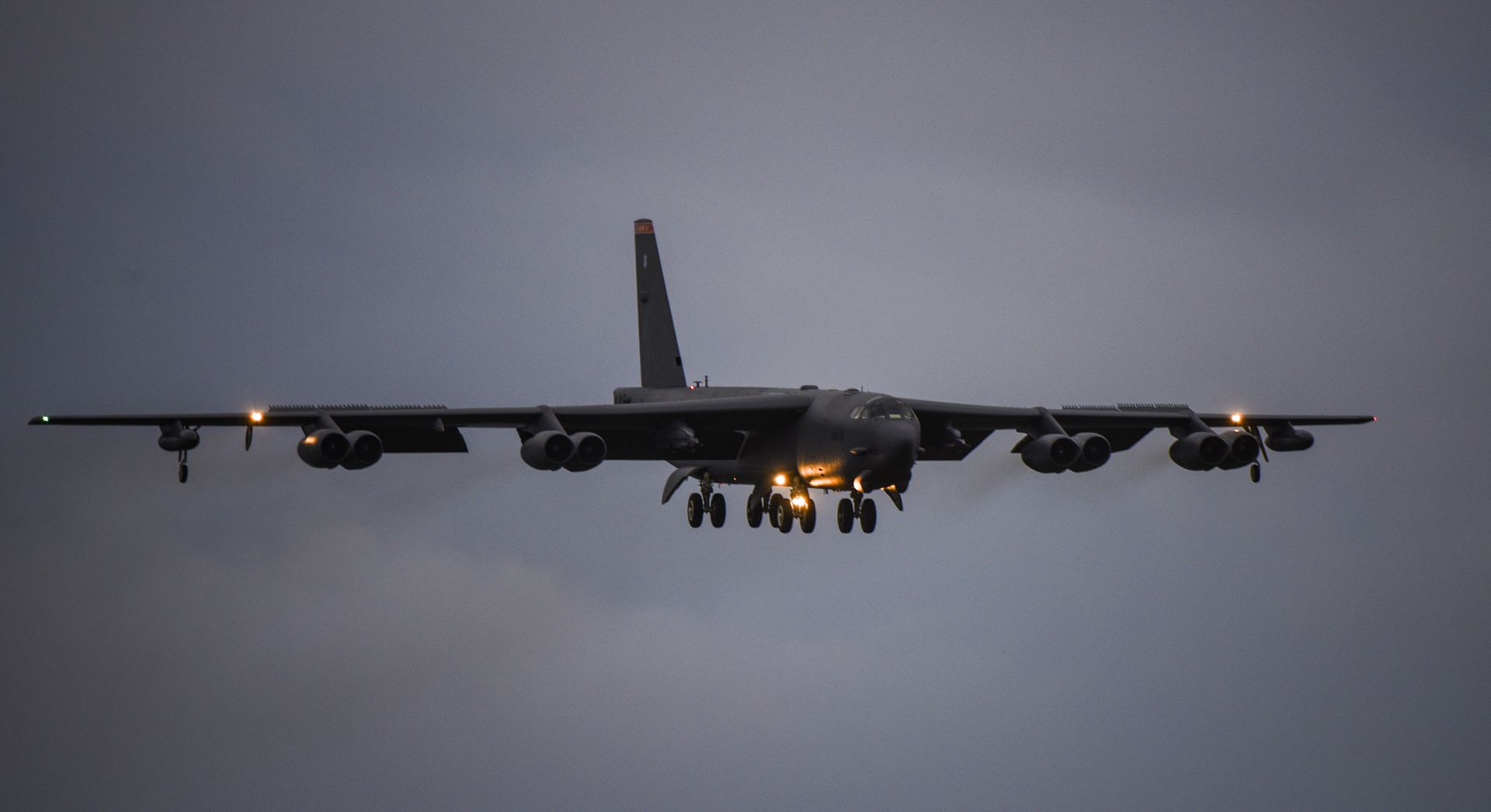

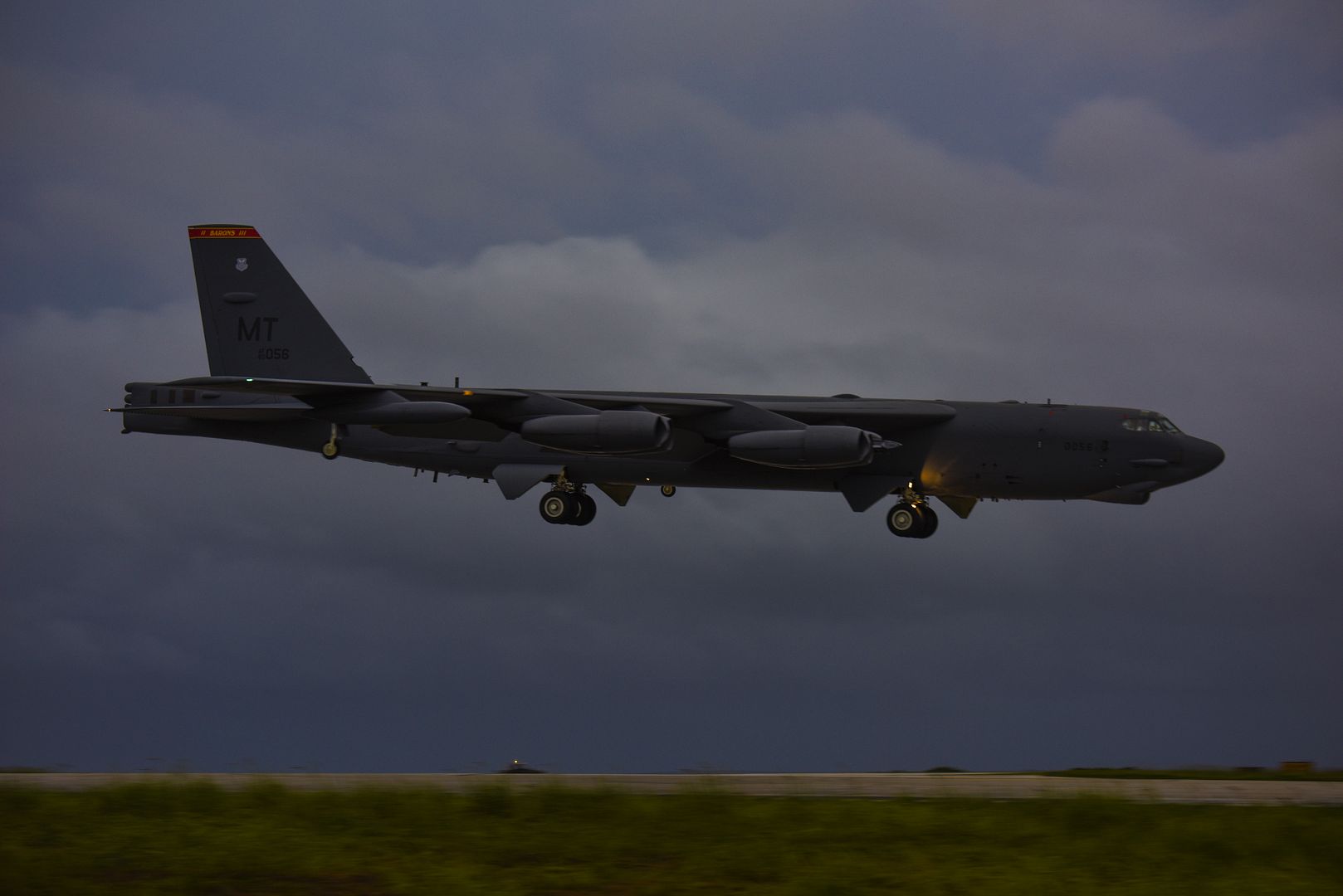
WESTERN PACIFIC OCEAN (Aug. 18, 2016) Capt. Gregory Czyzewski maneuvers an AV-8B Harrier II, assigned to the 13th Marine Expeditionary Unit (MEU), on the flight deck of amphibious assault ship USS boxer (LHD 4). Boxer, the flagship for the Boxer Amphibious Ready Group, with the embarked 13th MEU, is operating in the U.S. 7th Fleet area of operations in support of security and stability in the Indo-Asia-Pacific region. (U.S. Navy photo by Mass Communication Specialist Seaman Eric Burgett/Released)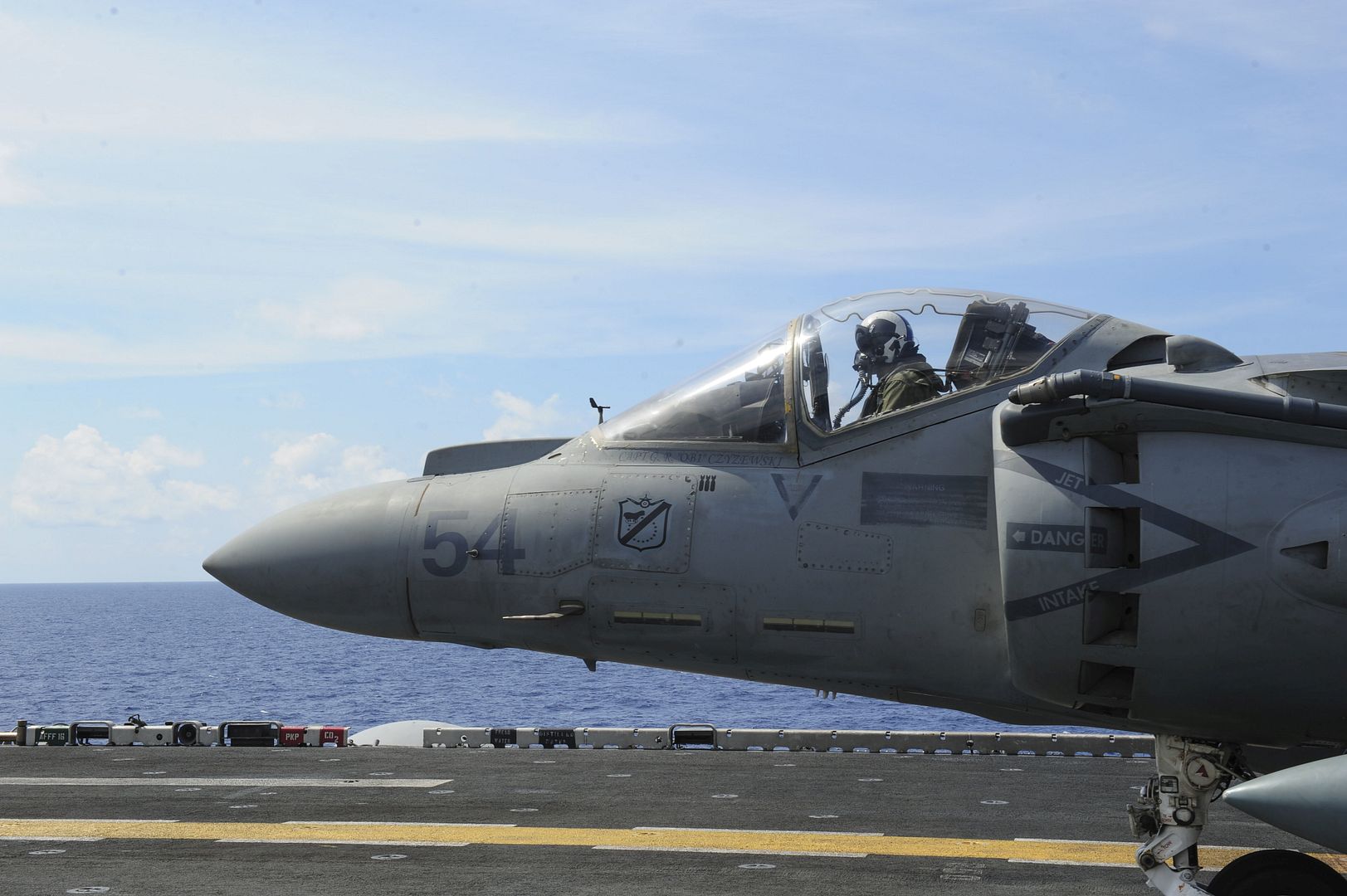
EVERETT, Wash., Aug. 18, 2016 ? The U.S. Air Force awarded Boeing [NYSE: BA] $2.8 billion on Aug. 18 for KC-46A tanker low-rate initial production.
The award includes the first two ?production lots? of 7 and 12 planes respectively, as well as spare parts. Including future options, Boeing plans to build a total of 179 of the 767-based refueling aircraft for the Air Force to replace their KC-135 fleet.
?The KC-46 tanker will provide the Air Force unprecedented refueling capabilities, operational flexibility and combat readiness,? said Leanne Caret, Boeing Defense, Space & Security president and CEO. ?It?s an important day for the company and program. We?re excited about building low-rate initial production aircraft, and it?s only possible because of the hard work of the joint Boeing-Air Force team.?
This step forward follows a Defense Acquisition Board review and announcement that the KC-46 program completed ?Milestone C? -- a set of required ground- and flight-test tests ? and is approved for initial production. Those tests included refueling flights with F-16, F/A-18, AV-8B, KC-10, C-17 and A-10 aircraft and a cargo handling demo.
Boeing received an initial contract in 2011 to design and develop the U.S. Air Force?s next-generation tanker aircraft. As part of that contract Boeing built four test aircraft ? two configured as 767-2Cs and two as KC-46A tankers. The test aircraft have completed more than 1,000 flight hours to date.
The KC-46A is a multirole tanker that can refuel all allied and coalition military aircraft compatible with international aerial refueling procedures and can carry passengers, cargo and patients.
Boeing is assembling KC-46 aircraft at its Everett, Wash., facility. The company will begin delivering tankers to the Air Force in 2017.
Rare First World War Sopwith Pup aircraft on display at IWM Duxford this summer
Visitors to IWM Duxford this summer will have the chance to see a rare First World War Sopwith Pup aircraft, which is currently on display in the Air and Sea exhibition.
The aircraft is being operated by the Historic Aircraft Collection and has been painstakingly reconstructed over the past four years. It has been rebuilt using many original First World War component parts, including an original engine. The attention to detail is remarkable; the aircraft is once again perfect in every detail.
Sopwith Pup N6161 was built at Kingston-on-Thames, fitted with an 80 horse power Le Rhone engine and delivered to St Pol in France on 25 January 1917. Pilot Titch Rochford, test flying the aircraft on 29 January 1917, recorded it as ?very easy to loop. Comes over much easier than a Bristol Scout.?
The Pup was allocated to No.9 Squadron on 1 February 1917, the day that the squadron was formed. That morning, the aircraft was flown by George Elliot, who had just arrived in France and was on his first mission. His was one of two Pups escorting two Sopwith 1 ? Strutters on a photo-reconnaissance flight over Bruges.
At 12,500 feet they were intercepted by two Rumpler float planes flown by German pilots Carl Meyer and Bernd Niemeyer. Carl Meyer, who was a very experienced pilot with four combat successes, managed to force George Elliot down to land on the beach in Bredene. Sopwith Pup N6161 was captured intact and Elliot survived as a Prisoner of War. It is said that Meyer wrote to Elliot in the Prisoner of War camps.
Some of the original parts of the aircraft were retained by Meyer and were on display in the family museum until acquired by the present owner and passed down to his family following his death while testing a prototype Aviatik on 31 December 1917.
These remaining original N6161 parts have been incorporated, alongside other original Sopwith factory and period Sopwith Pup components, in the reconstruction of N6161, which was undertaken by Retrotec, the restoration arm of the Historic Aircraft Collection Ltd. The aircraft will remain in the Air and Sea exhibition until the autumn. It will return to the skies very shortly with its first public display penciled in for The Duxford Air Show: Meet the Fighters (Saturday 10 and Sunday 11 September). It will be flown in its original British markings initially, but later on it is planned to paint it in the German markings.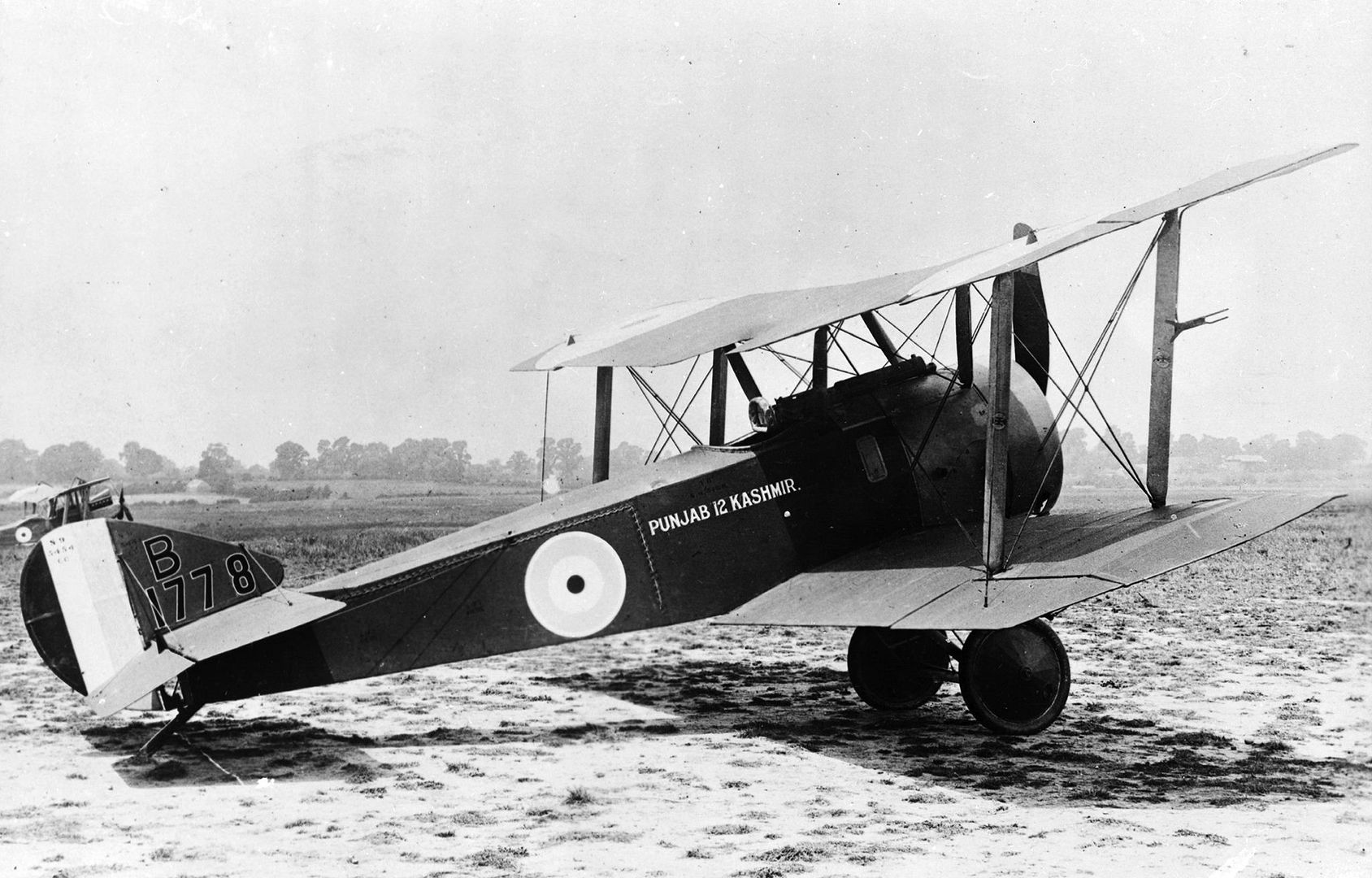
From here - http://www.raf.mod.uk/news/archive/first-world-war-sopwith-pup-aircraft-on-display-at-iwm-duxford-19082016
-
 Main AdminA T-38 Talon with the 2nd Fighter Training Squadron, Tyndall Air Force Base, Fla., flies over the Gulf Coast during a training mission near Tyndall Aug. 18, 2016. The 2nd FTS, or American Beagles, is one of only two U.S. Air Force T-38 Talon adversary squadrons, and is tasked to provide air-to-air threat replication in support of F-22 Raptor combat and formal training squadrons.
Main AdminA T-38 Talon with the 2nd Fighter Training Squadron, Tyndall Air Force Base, Fla., flies over the Gulf Coast during a training mission near Tyndall Aug. 18, 2016. The 2nd FTS, or American Beagles, is one of only two U.S. Air Force T-38 Talon adversary squadrons, and is tasked to provide air-to-air threat replication in support of F-22 Raptor combat and formal training squadrons.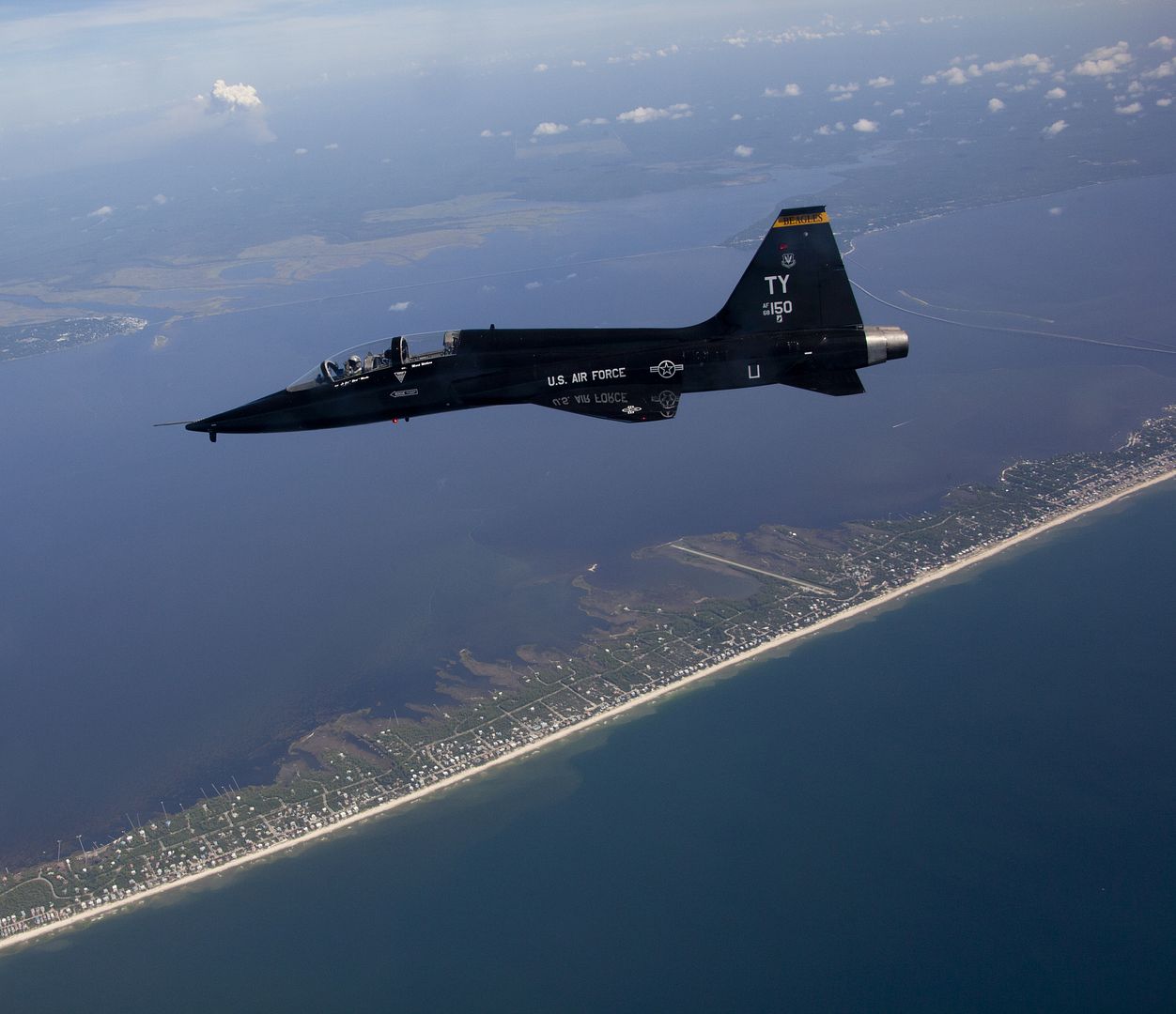
CAPE CANAVERAL AIR FORCE STATION, FL, UNITED STATES
08.19.2016
A United Launch Alliance (ULA) Delta IV rocket carrying AFSPC-6 mission lifts off from Space Launch Complex-37, Cape Canaveral Air Force Station, Fla., at 12:52 a.m. EDT. The 45th Space Wing supported the successful launch of the third and fourth Orbital ATK-built Geosynchronous Space Situational Awareness Program satellites for the Air Force with weather forecasts, launch and range operations, security, safety and public affairs. The wing also provided its vast network of radar, telemetry and communications instrumentation to facilitate a safe launch on the Eastern Range, (Courtesy photo/United Launch Alliance)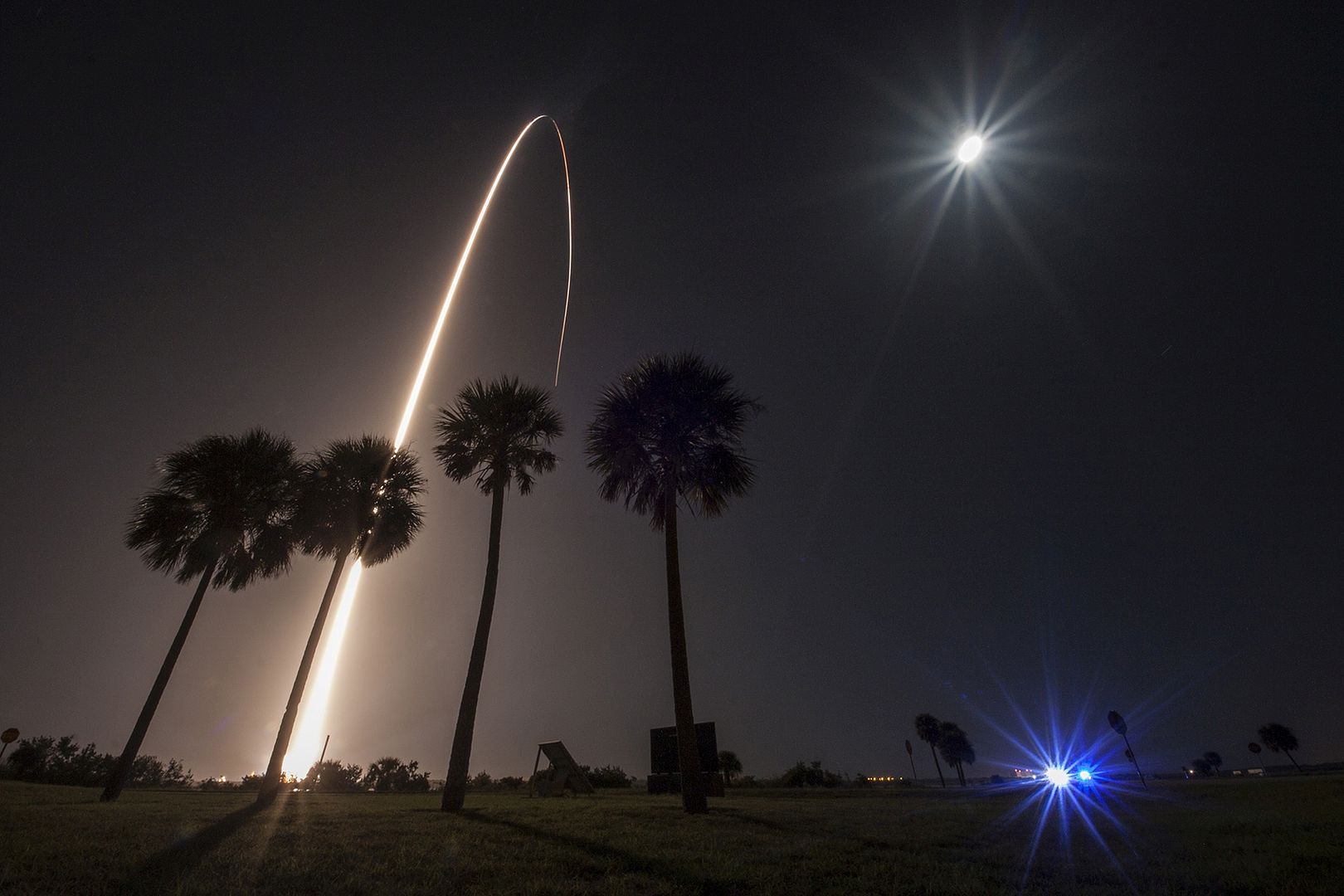
An A-10 Thunderbolt II with the 75th Fighter Squadron from Moody Air Force, Ga., arrives for Exercise Green Flag East at Barksdale Air Force Base, La., Aug. 19, 2016. Four A-10s were allotted for the exercise which provides simulated ground support to U.S. Army forces. American and Colombian aircraft will be flying together for the duration of the exercise. (U.S. Air Force photo/Senior Airman Mozer O. Da Cunha)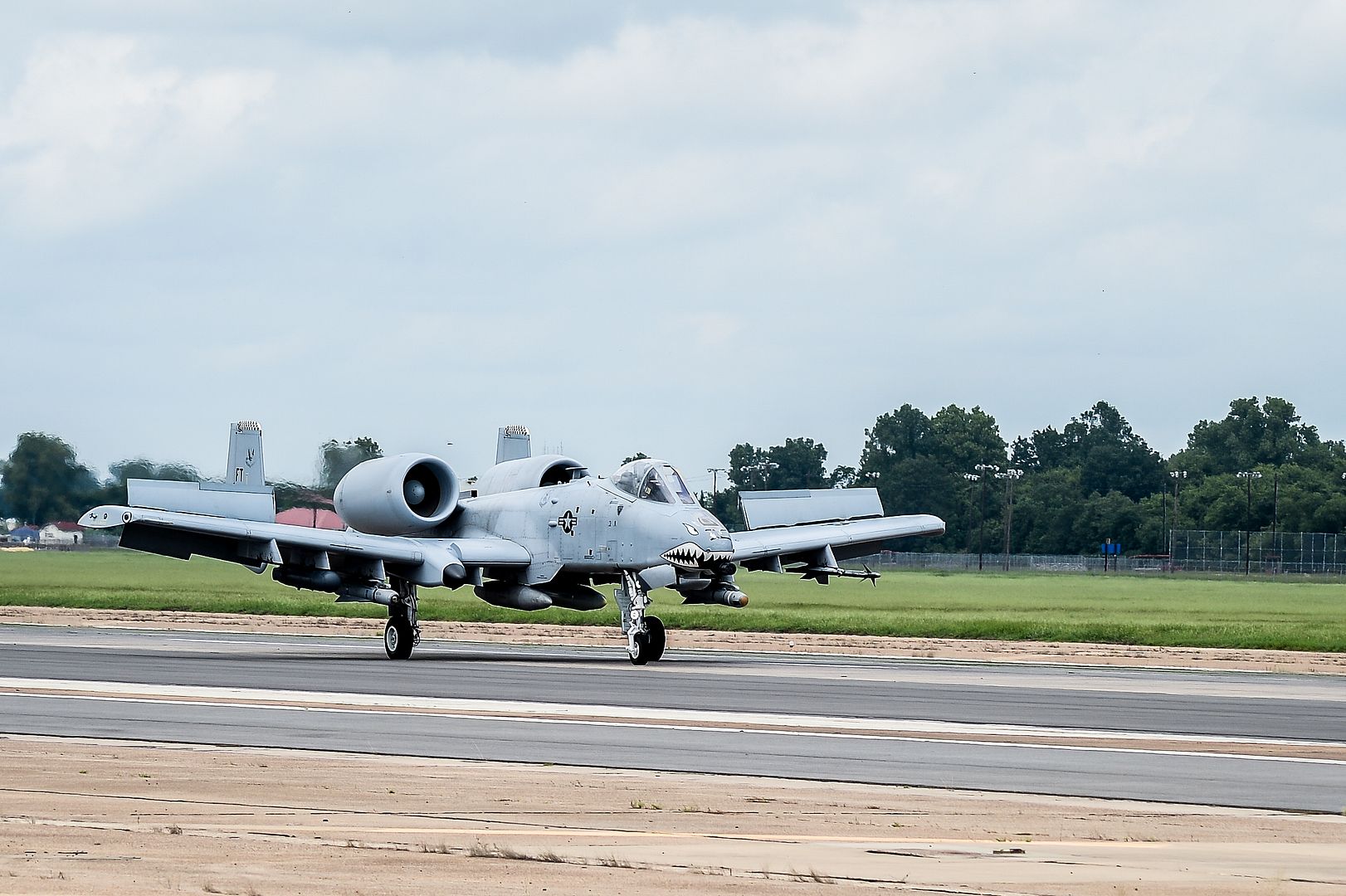
An A-29B Super Tucano sits in front of two A-10 Thunderbolt II aircraft during Exercise Green Flag East at Barksdale Air Force Base, La., Aug. 19, 2016. The exercise consists of four A-29 Super Tucanos, four A-10 Thunderbolt IIs as well as other U.S. Air Force aircraft to train in close-air-support missions. (U.S. Air Force photo/Senior Airman Mozer O. Da Cunha)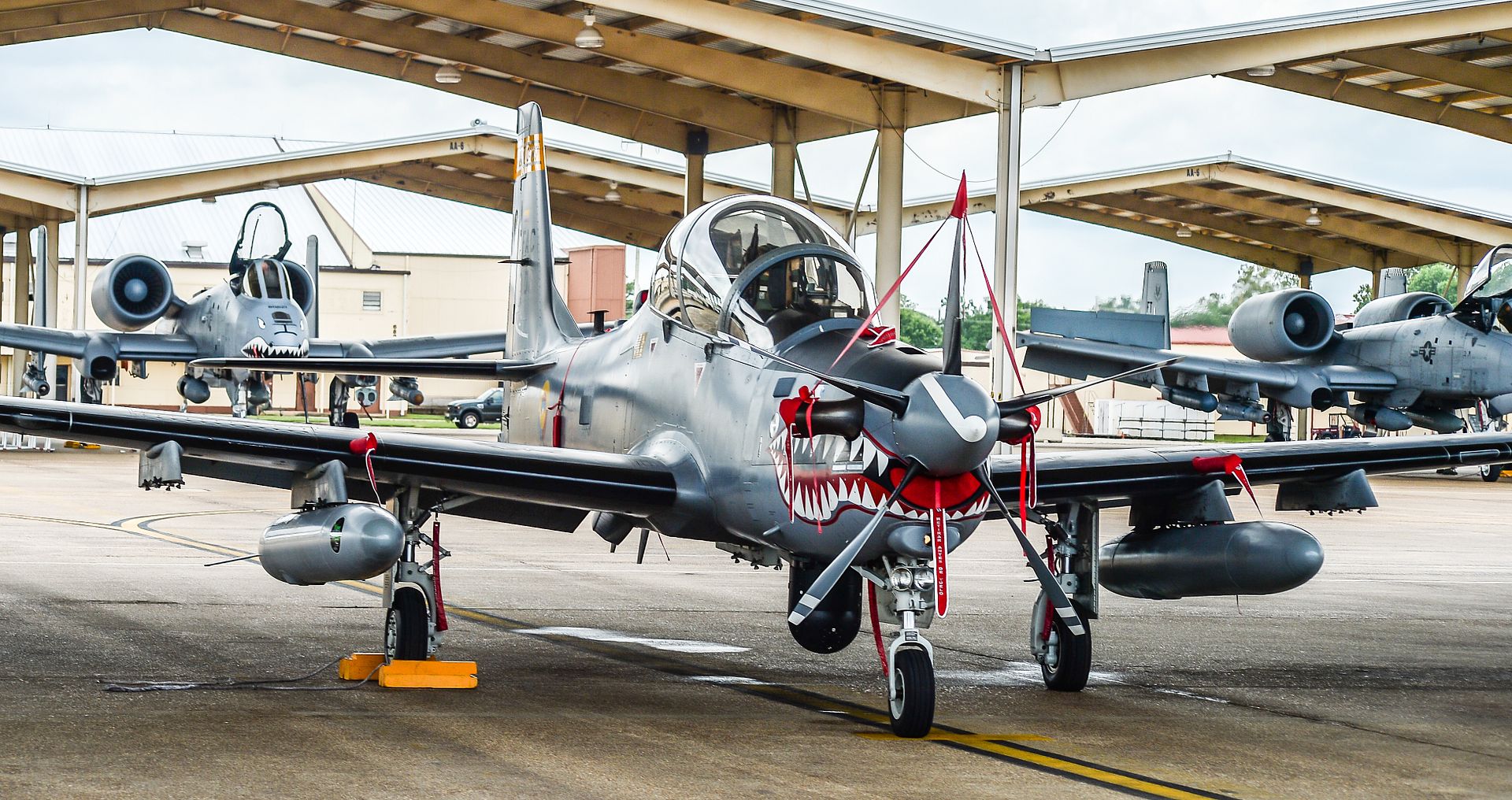
A U.S. Air Force B-52H Stratofortress conducts a training mission over the Delamere Training Range in Northern Australia during Exercise Pitch Black, Aug. 18, 2016. PB16, a multilateral exercise hosted by Australia from Jul. 29 through Aug. 19, allowed participant nations to exercise deployed units in the tasking, planning and execution of offensive counter air and offensive air support while utilizing one of the largest training airspace areas in the world. (U.S. Air Force photo by Staff Sgt. Sandra Welch)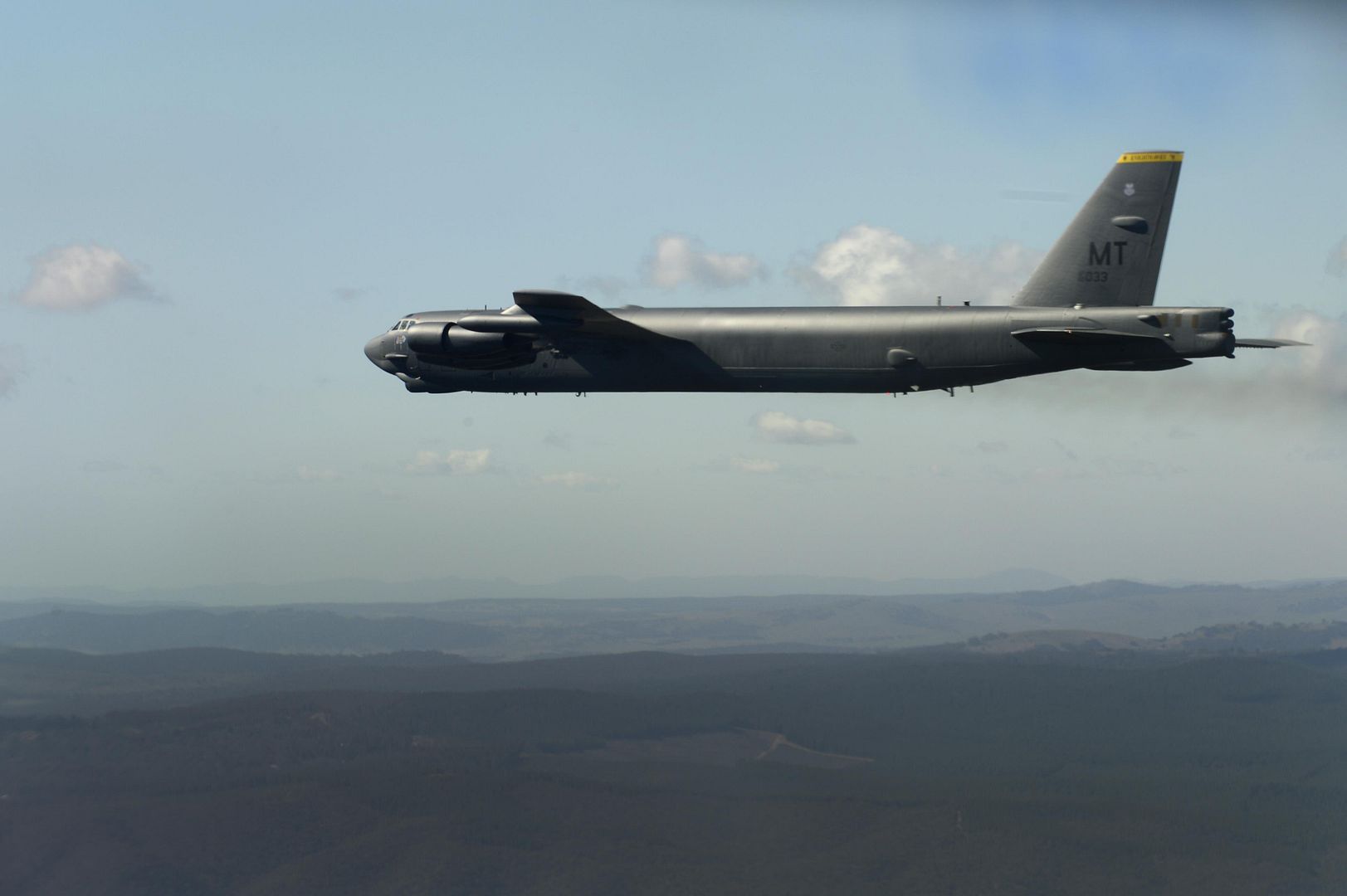
-
8 years agoSun Aug 21 2016, 11:50pm
 Main Admin
Main Admin
-
 Main AdminARABIAN GULF (Aug. 21, 2016) An F/A-18C Hornet assigned to the Wildcats of Strike Fighter Squadron (VFA) 131 launches from the flight deck of the aircraft carrier USS Dwight D. Eisenhower (CVN 69) (Ike). Ike and its Carrier Strike Group are deployed in support of Operation Inherent Resolve, maritime security operations and theater security cooperation efforts in the U.S. 5th Fleet area of operations. (U.S. Navy photo by Mass Communication Specialist Seaman Dartez C. Williams)
Main AdminARABIAN GULF (Aug. 21, 2016) An F/A-18C Hornet assigned to the Wildcats of Strike Fighter Squadron (VFA) 131 launches from the flight deck of the aircraft carrier USS Dwight D. Eisenhower (CVN 69) (Ike). Ike and its Carrier Strike Group are deployed in support of Operation Inherent Resolve, maritime security operations and theater security cooperation efforts in the U.S. 5th Fleet area of operations. (U.S. Navy photo by Mass Communication Specialist Seaman Dartez C. Williams)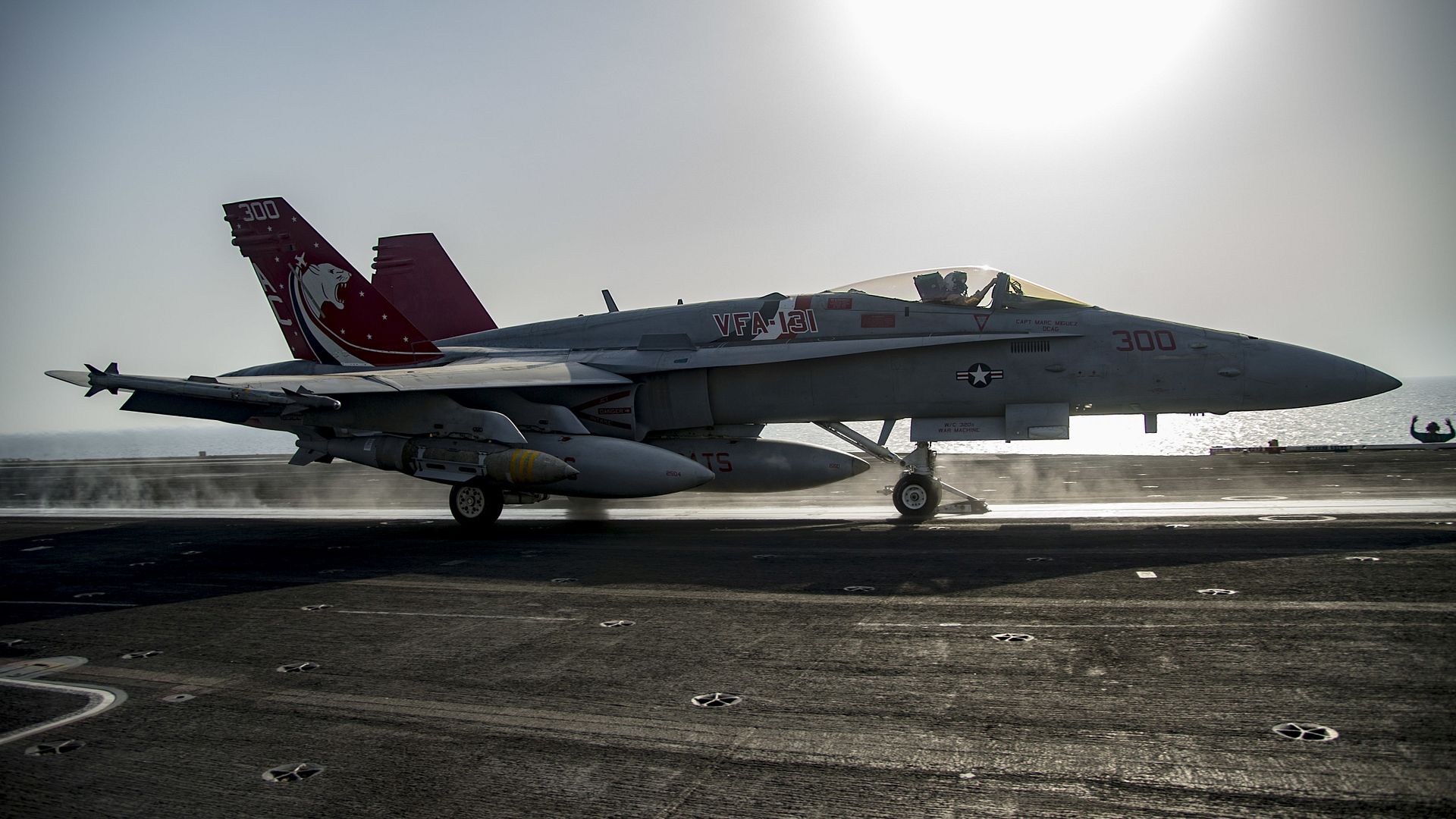
ST. LOUIS, August 22, 2016 ? Boeing [NYSE: BA] has delivered to the Republic of Korea an Apache Longbow Crew Trainer that the country?s Army air crews will use to prepare for the AH-64E Apache Guardian helicopters that Boeing begins delivering later this year.The system uses the Apache?s flight software and matured flight and avionics simulation models to create an accurate training environment that increases mission readiness.
?The AH-64 Apache helicopter is a critical force multiplier to the U.S. Army and customers around the world,? said Randy Nielson, U.S. Army Apache Program Management Office lead for operator training devices. ?The Longbow Crew Trainer is an invaluable asset that will enable Korean Army AH-64 aviators to train and sustain aircraft systems, flight and tactical tasks, increasing their combat effectiveness while reducing risk to the soldier.?
Boeing will provide two years of training and maintenance on the system. The delivery completes one portion of South Korea?s $1.6 billion order for 36 Guardian helicopters and training and logistical support.
?As the original equipment manufacturer, Boeing is uniquely positioned to offer customers the most comprehensive and immersive training systems available for our platforms,? said Dwight Brandon, Apache Training Systems program manager. ?Customers know that Boeing can help them train their people and support their aircraft to affordably maintain mission readiness for many years.?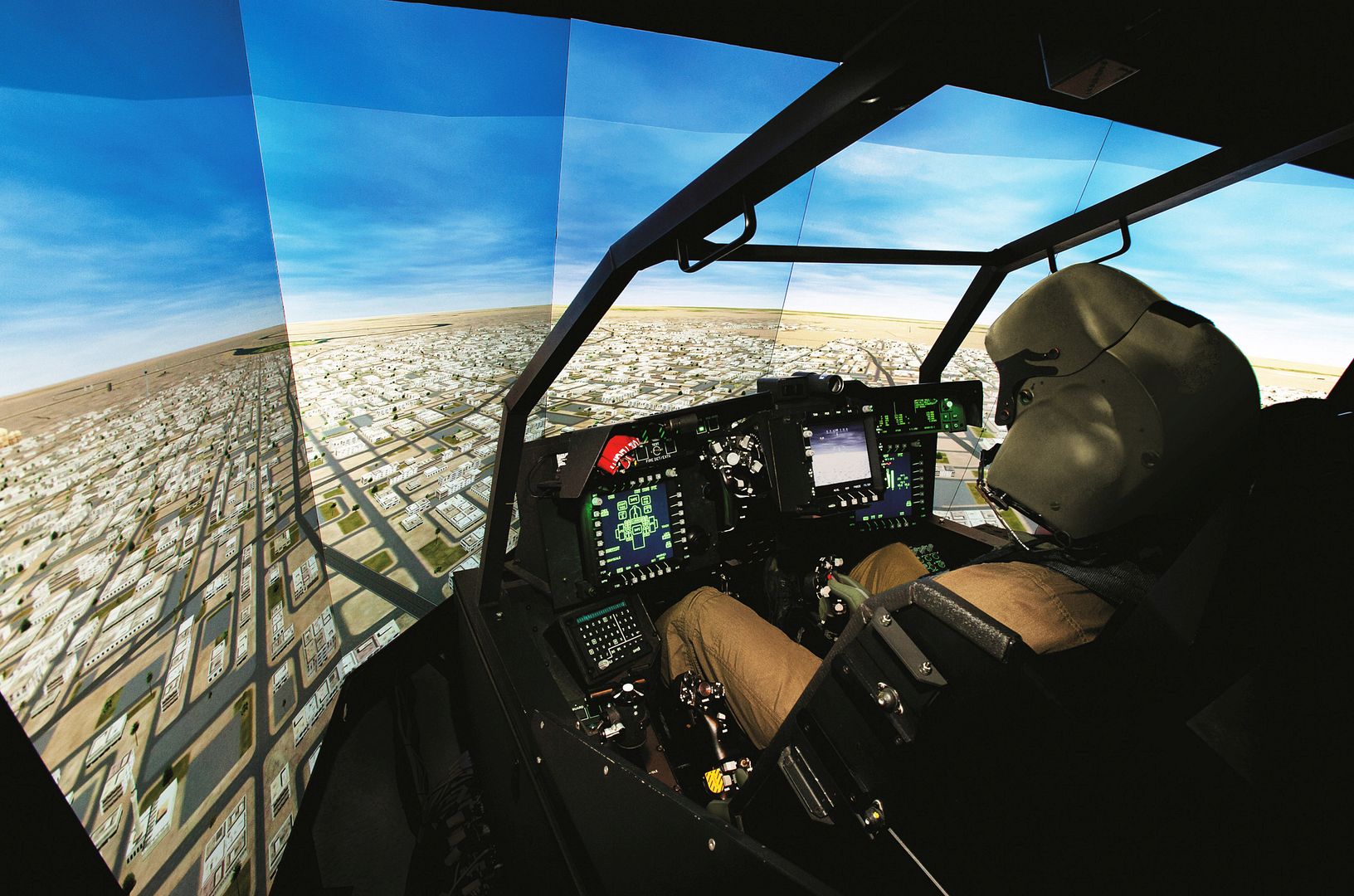
RAAF Base Tindal. Ex Pitch Black may of come to an end but the Republic of Singapore Air Force will continue training in the Top End until 08 Sep 16.
Republic of Singapore Air Force F-16C/D aircraft will continue unilateral training from 23 Aug until 08 Sep 16. This training is concurrent with another unilateral exercise being conducted at RAAF Base Amberley.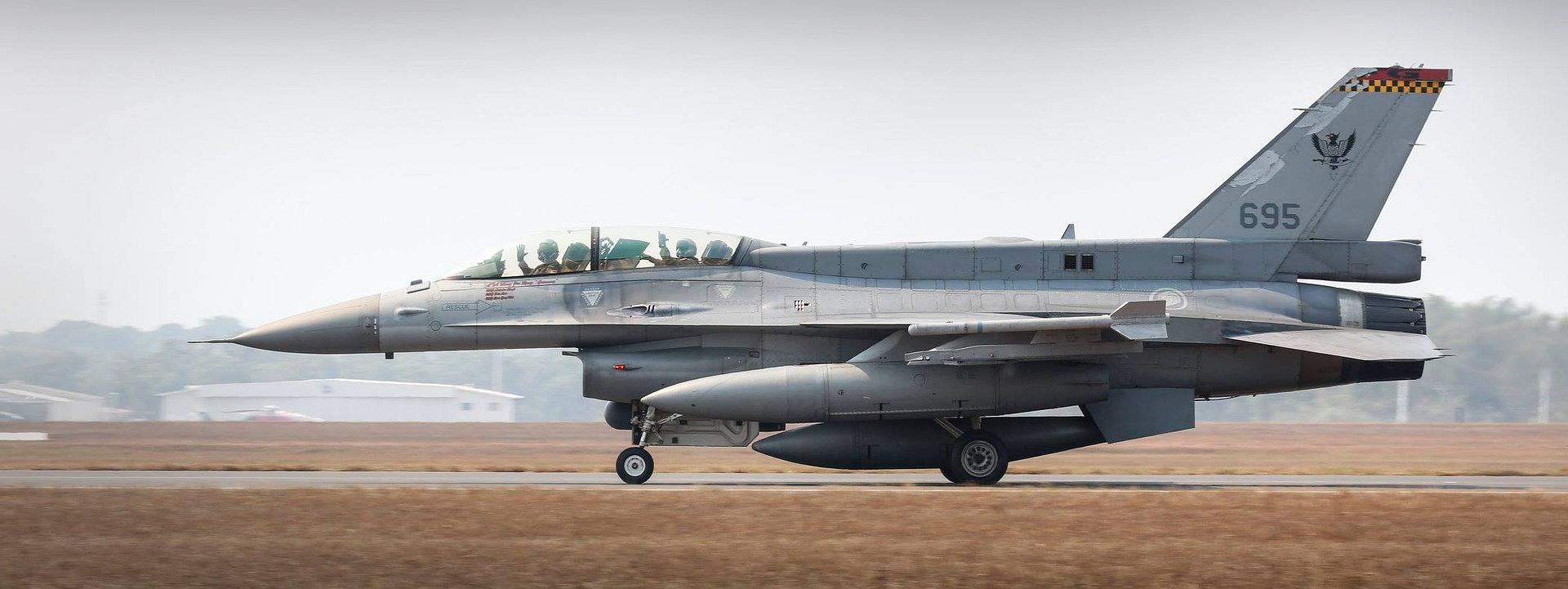
On Sunday, 21 August 2016, an air raid French hit a centre of storage and maintenance of heavy weaponry of daesh in raqqah, Syria.
This raid was composed of four Mirage 2000 and an Atlantic 2. A dozen cruise missiles "scalp" hit and destroyed this centre located in the heart of the territory controlled by the terrorist group.
This action occurs after an intense week of strikes by French aircraft, within the framework of the international coalition, in support of the land operations Iraqi forces and Kurds near Mosul in Iraq. Such strikes have destroyed many battle stations, weapons caches, sites of manufacture of explosives and heavy weaponry.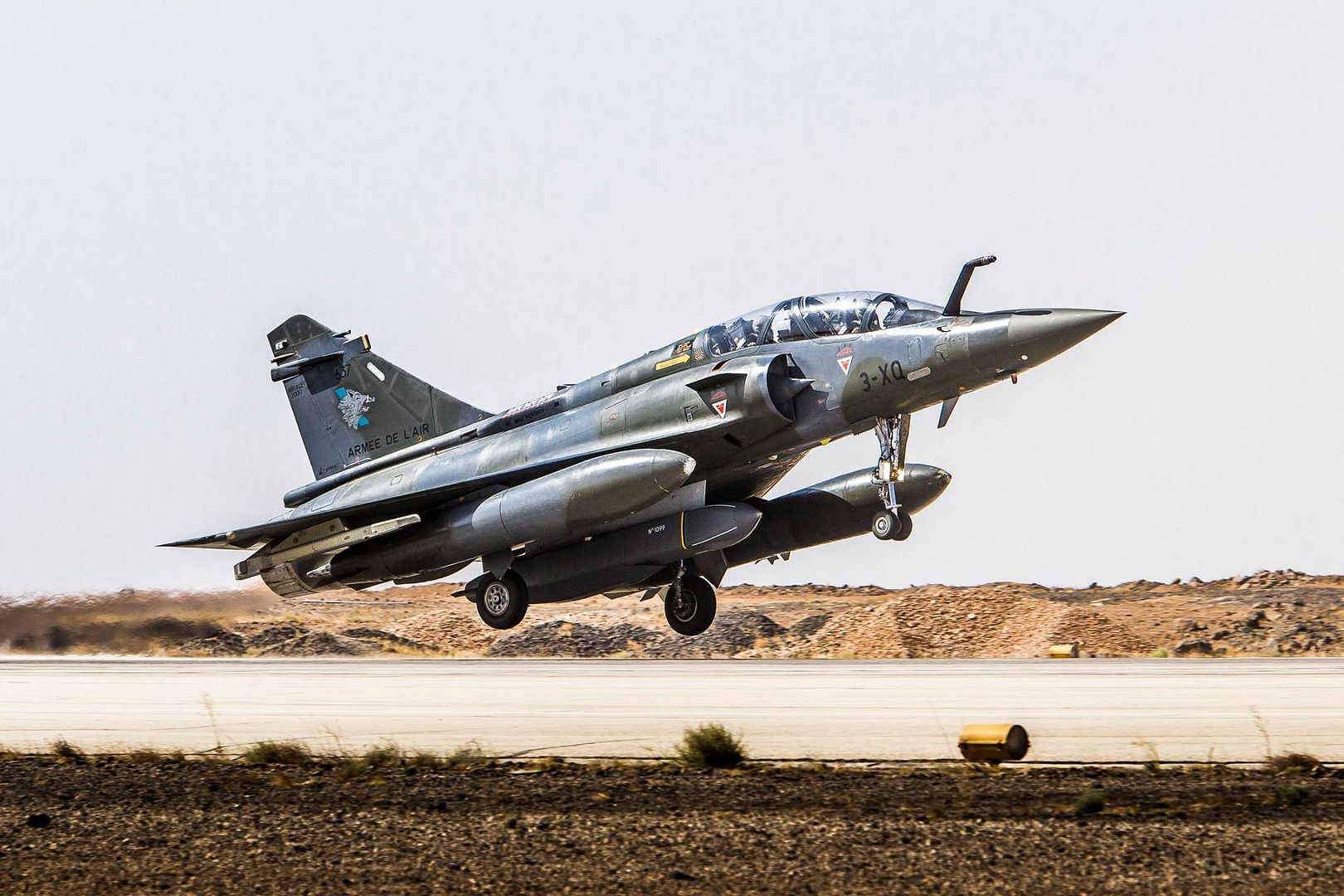
Post a reply
- Go to Previous topic
- Go to Next topic
- Go to Welcome
- Go to Introduce Yourself
- Go to General Discussion
- Go to Screenshots, Images and Videos
- Go to Off topic
- Go to Works in Progress
- Go to Skinning Tips / Tutorials
- Go to Skin Requests
- Go to IJAAF Library
- Go to Luftwaffe Library
- Go to RAF Library
- Go to USAAF / USN Library
- Go to Misc Library
- Go to The Ops Room
- Go to Made in Germany
- Go to Campaigns and Missions
- Go to Works in Progress
- Go to Juri's Air-Raid Shelter
- Go to Campaigns and Missions
- Go to Works in Progress
- Go to Skinpacks
- Go to External Projects Discussion
- Go to Books & Resources
